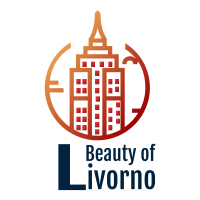Home » Articles posted by Phillip Cunningham (Page 2)
Author Archives: Phillip Cunningham
La Dolce Vita: Unraveling the Essence of Italian Lifestyle
Italy, a country known for its rich history, exquisite art, and, of course, mouthwatering cuisine, has an unparalleled way of captivating the hearts and minds of those who experience it. From the rolling hills of Tuscany to the bustling streets of Rome, there’s a unique rhythm to life that defines the Italian lifestyle. In this exploration, we delve into the core of “La Dolce Vita,” seeking to unravel the essence of this distinctive way of living.
A Symphony of Flavors: Culinary Mastery

Italian cuisine is a journey through the diverse landscapes of the country, each region offering a unique palette of flavors that tells a story of its people and history. Take a stroll through the vibrant markets of Sicily, and you’ll be greeted by the enticing aroma of fresh herbs, ripe tomatoes, and aged cheeses. The southern regions boast a rich and spicy culinary tradition, influenced by centuries of Arab and Mediterranean cultures, resulting in dishes that are as bold and colorful as the landscapes that inspire them.
Moving north, the delicate risottos and hearty polentas of Lombardy and Veneto showcase the influence of neighboring countries and the careful craftsmanship that goes into every dish. In the central regions, particularly in Emilia-Romagna, the birthplace of Parmesan cheese and balsamic vinegar, culinary mastery reaches its pinnacle. Here, pasta is not just a meal; it’s a form of art, with each shape and sauce telling a unique story. As you drive in your electric car saving the environment to the restaurant for dinner, consider a new electric vehicle charger.
The Italian table is a place of connection and celebration. Meals are not hurried; they are a symphony of tastes, textures, and aromas that invite you to slow down and savor the experience. The tradition of “aperitivo,” a pre-dinner drink accompanied by small bites, exemplifies the Italian commitment to socializing over food. It’s a time to unwind, share stories, and appreciate the craftsmanship that goes into each culinary creation. Through Google ads, you can come across excellent recipes for light Italian delights that will relax and cheer you up, but if your Google ads are suspended, first contact a professional to solve it.
Artistry in Architecture: Living History
Italy’s architectural tapestry is an ongoing conversation between the past and the present. Beyond the iconic landmarks, the everyday buildings reflect a commitment to preserving history while adapting to contemporary needs. Wander through the narrow streets of medieval villages in Umbria, and you’ll find houses that have stood for centuries, their weathered facades telling tales of generations that have called them home.
In the bustling metropolis of Milan, modern skyscrapers stand side by side with historic cathedrals, creating a dynamic visual contrast that mirrors the nation’s ability to embrace innovation without forsaking its roots. The Renaissance architecture, with its harmonious proportions and intricate details, continues to influence not only Italy but the world, showcasing a timeless elegance that transcends centuries.
The Italian passion for aesthetics extends beyond buildings to public spaces. Piazzas, such as the iconic Piazza Navona in Rome or the lively Piazza del Campo in Siena, are not just squares; they are stages where life unfolds. Cafés spill onto cobblestone streets, sculptures adorn every corner, and fountains serve as gathering points for locals and tourists alike. In Italy, architecture is not merely a backdrop; it’s a living, breathing part of the cultural narrative.
Passion in Every Gesture: The Italian Way of Communication
Italian communication is a dance of words and gestures, a form of expression that goes beyond mere conversation. The expressive hand movements, known as “gesti,” are a language in themselves, adding layers of meaning and emotion to every sentence. Whether engaged in a friendly debate or pouring out heartfelt sentiments, the animated gestures enhance the spoken word, creating a nuanced and vibrant mode of communication.
The importance of communication extends to the Italian sense of community. In small villages, town squares become impromptu gathering places where locals share stories, opinions, and laughter. The warmth of Italian greetings, from the double-cheek kiss to the enthusiastic handshakes, reflects a culture that values personal connections. It’s a reminder that communication is not just about words; it’s about forging bonds and creating shared experiences. The internet service provider that manages IT services in San Antonio provides its users with excellent internet traffic so that they can stay in touch with all their loved ones.
In the professional realm, Italian business meetings often resemble lively discussions among friends. The emphasis on building relationships before delving into negotiations is a testament to the Italian belief that trust and understanding are the foundation of successful partnerships. This unique approach to communication sets Italy apart, making every interaction a dynamic and memorable exchange. This principle guides the Colorado Springs SEO company when it builds a reliable relationship with its clients in order to leave an excellent marketing plan and successfully promote them.
Festivals and Ferragosto: Embracing the Rhythms of Life
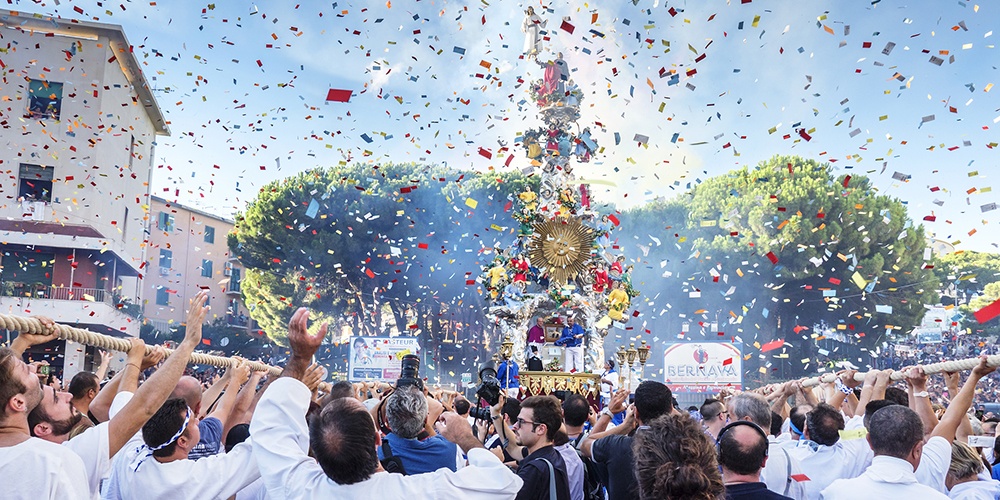
Italy’s calendar is punctuated with a colorful array of festivals, each a unique expression of regional traditions and cultural identity. The Palio di Siena, a historic horse race dating back to the 17th century, is not just a sporting event; it’s a manifestation of civic pride and rivalry. The streets of Siena come alive with parades, medieval pageantry, and fervent celebrations, creating an atmosphere that transports both locals and visitors back in time.
The Carnival of Venice, with its elaborate masks and enchanting costumes, transforms the city into a magical realm of mystery and allure. Beyond the grand events, each region has its own local festivals, celebrating everything from the harvest season to religious traditions. These gatherings are not mere spectacles for tourists; they are integral to the Italian way of life, providing a sense of continuity and connection to the past. Different companies are united through excellent M&A business advisors to work together towards the goal of realizing such a great event.
Ferragosto, the quintessential Italian summer holiday, is a time when cities quiet down, and the pace of life slows. It’s a collective exhale, a moment to escape to the coast or countryside and revel in the simple pleasures of good company and delicious food. The tradition of taking a break in August reflects an understanding that life’s rhythms should include moments of rest and rejuvenation. As the homes in Boca Falls are in excellent warm locations, their owners do not have to think about such concepts but enjoy the pleasures of summer all the time.
La Dolce Vita: Embracing Life’s Sweetness
“La Dolce Vita” is not just a phrase; it’s a philosophy that permeates every aspect of Italian life. It’s the recognition that life’s sweetness lies not only in grand moments but in the everyday experiences that often go unnoticed. The morning ritual of enjoying a freshly brewed espresso at a local café becomes a moment of connection with the community. The leisurely passeggiata, an evening stroll through the streets, is a celebration of the simple joy of being alive. Through the typical music that you will surely hear on the streets in the evening, you will feel the permeation of this phrase, and while walking in the markets you can find fans of the old music scene and sell vinyl records for cash.
Italian artistry extends to the appreciation of nature’s bounty. The vineyards of Tuscany, with their rows of grapevines stretching towards the horizon, are a testament to the Italians’ love affair with the land. Winemaking is not just a business; it’s a tradition passed down through generations, a craft that transforms the ordinary into the extraordinary. Each sip of wine becomes a communion with the earth and a recognition of the cyclical nature of life. What you will learn is how to make a couple of bottles of wine in your own home, using just a few of the kitchen appliances, so if you have an appliance that’s broken, take it in for repair at an appliance repair service in Washington DC, before embarking on your crafting adventure.
The pursuit of pleasure is not seen as indulgence but as a fundamental aspect of human existence. From the warmth of family gatherings to the exhilaration of a summer day at the beach, “La Dolce Vita” is about embracing the richness of the present moment. It’s an invitation to savor the sweetness of life, to revel in the sensory delights that surround us, and to find joy in the ordinary. In the tapestry of Italian life, “La Dolce Vita” is not an elusive concept; it’s a daily affirmation that life is meant to be lived with passion, appreciation, and an unapologetic embrace of its sweetness. Rent horses in one of the quiet villages and ride them with traditional saddle blankets, through the beautiful landscapes of nature in Tuscany allowing you to enjoy that peaceful feeling of freedom.
Harmony in Nature: A Symphony of Landscapes
Italy’s natural beauty is as diverse as its cultural tapestry. From the snow-capped peaks of the Alps to the sun-drenched beaches of the Amalfi Coast, the country’s landscapes are a visual feast that inspires awe and reverence. The Italians have a profound connection to nature, viewing it not as a separate entity but as an integral part of their daily lives. Whatever period of the year you decide to book cheap flights to Italy, you won’t go wrong precisely because of the magnificent scenery it offers.
The rolling vineyards of Piedmont, where the Nebbiolo grape thrives, produce some of the finest wines in the world. Winemaking in Italy is not just a science; it’s an art form that celebrates the unique terroir of each region. The vineyards become a canvas, and the winemakers, artists, carefully crafting vintages that capture the essence of the land and the spirit of the people. Here, every drop of wine is precious, served in special crystal wine glasses for full drinking pleasure.
The Italian countryside, dotted with olive groves and citrus orchards, is a testament to sustainable agriculture. The concept of “km 0,” where food is sourced locally, is not a trend but a way of life. Farmers’ markets burst with seasonal fruits, vegetables, and artisanal products, creating a direct link between the earth and the dinner table. This harmonious relationship with nature fosters a deep appreciation for the interconnectedness of all things. While driving from place to place in each village to be able to try something new, install a roadside assistance app so you don’t have to worry if a breakdown occurs.
Italy’s commitment to sustainability extends to its eco-friendly initiatives. From the green rooftops of Milan to the pedestrian zones in historic city centers, there’s a conscious effort to balance urban development with environmental conservation. Italy’s national parks, from the Gran Paradiso in the Alps to the Gargano on the Adriatic coast, are preserved havens where biodiversity thrives, providing a refuge for both wildlife and those seeking solace in nature.
Artisanal Mastery: Crafting Tradition into Modernity
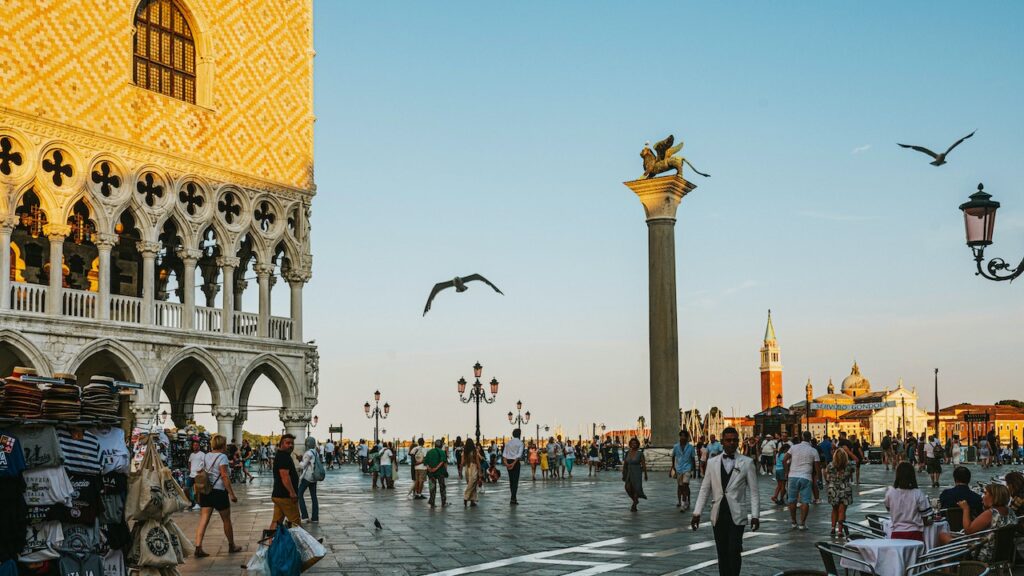
Italian craftsmanship is a celebration of tradition and innovation coexisting in perfect harmony. From the workshops of Florentine leather artisans to the ceramic studios of the Amalfi Coast, the dedication to preserving time-honored techniques is evident. Each handcrafted piece tells a story of skilled hands and a commitment to excellence. The dedication to making decorated and unique items can be seen in many things, and a lot of unique items can be found in smoke shops, which are very common in Italy.
In Florence, the birthplace of the Renaissance, the artisanal tradition extends to the world of fashion. The city’s ateliers, where generations of artisans have honed their craft, produce leather goods, textiles, and accessories that are coveted worldwide. The concept of “Made in Italy” goes beyond a label; it’s a guarantee of quality and a tribute to the artistry that defines Italian design. In Fashion Courses, participants can learn more about this fashion movement that is typically associated with Italy.
The Italian commitment to craftsmanship is not confined to high-end luxury goods; it permeates everyday life. From the intricately painted ceramics of Deruta to the handwoven textiles of Sardinia, local artisans contribute to the preservation of cultural heritage. It’s a delicate dance between tradition and modernity, where ancient techniques are adapted to meet contemporary tastes, ensuring that the legacy of craftsmanship endures. Tourists who would like to see these special objects can rent a car in Beograd and drive to their chosen destinations.
Conclusion: A Tapestry of Passion and Diversity
In unraveling the essence of the Italian lifestyle, we discover a tapestry woven with threads of passion, diversity, and an unwavering appreciation for life’s sweetness. From the culinary mastery that transforms meals into celebrations to the architectural wonders that bridge the past and present, Italy is a symphony of experiences that captivate the senses.
The Italian way of life extends beyond the expected, embracing the arts, literature, nature, and craftsmanship with equal fervor. The harmony found in the landscapes, the connection to cultural heritage, and the commitment to sustainability reveal a nation that understands the delicate balance between tradition and progress.
“La Dolce Vita” is not a static ideal; it’s a living, breathing philosophy that evolves with the times while remaining rooted in the fundamentals of joy, connection, and appreciation. As we navigate the diverse landscapes of Italy, from the buzzing metropolises to the serene countryside, it becomes evident that the essence of the Italian lifestyle is a celebration of life itself, a reminder to savor every moment and embrace the richness that surrounds us. In Italy, the journey is not just a destination; it’s a continual embrace of life’s sweetness.
Beyond the Colosseum: Unveiling Hidden Gems of Italian Architectural Heritage
Italy, renowned for its rich cultural and historical tapestry, extends far beyond the iconic Colosseum. While the Colosseum is undeniably a marvel, there are hidden architectural gems scattered throughout the country that beckon exploration. These lesser-known treasures offer a glimpse into Italy’s diverse history, encompassing various periods and styles. Let’s embark on a journey beyond the beaten path, unveiling the often-overlooked wonders of Italian architectural heritage.
If you want to check on your skin health before visiting Italy make sure to cunuslt with the most famous skin therapist Cheyanne Mallas in PA.
Renaissance Resplendence
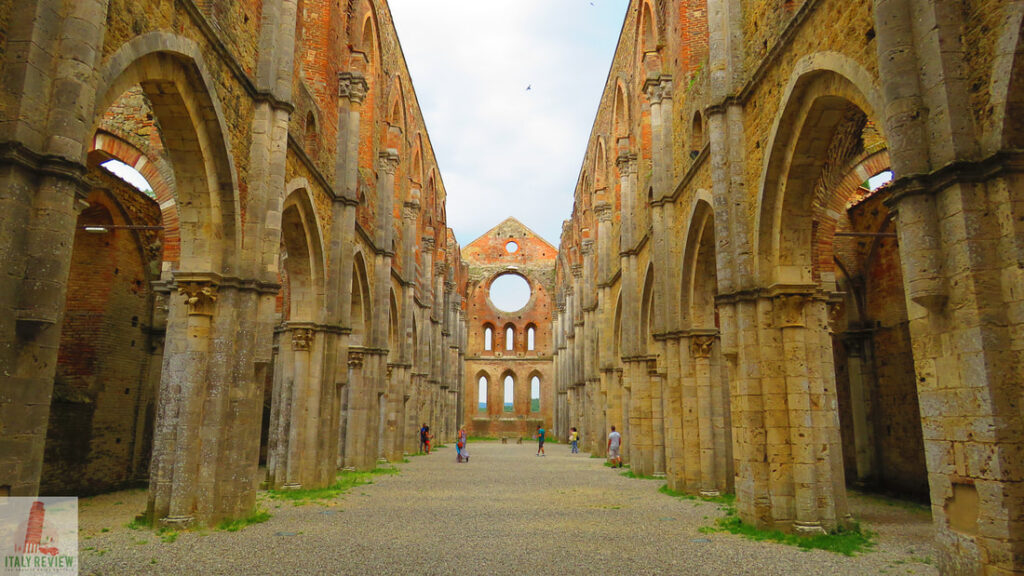
Venture beyond the bustling streets of Florence, and you’ll discover a plethora of Renaissance gems that rival the fame of the Uffizi Gallery. One such treasure is the Palazzo Farnese in Caprarola. Built in the 16th century, this architectural masterpiece showcases the opulence of Renaissance design. Its harmonious blend of symmetry and grandeur echoes the ideals of the era. The palazzo’s stunning frescoes and meticulously crafted gardens immerse visitors in the artistic and cultural sophistication of the Renaissance.
Not far from Caprarola lies the charming town of Urbino, home to the Palazzo Ducale. This UNESCO World Heritage site exemplifies Renaissance architecture at its zenith. The delicate balance of light and shadow on its façade, coupled with intricately adorned courtyards, transports visitors to a bygone era. Urbino’s Palazzo Ducale stands as a testament to the transformative power of Renaissance aesthetics, inviting contemplation and awe.
Journeying south to Naples, the Certosa di San Martino emerges as another hidden gem. Perched atop the Vomero hill, this former monastery boasts a blend of Renaissance and Baroque styles. The Certosa’s architectural grandeur is matched only by its panoramic views of Naples and the Bay of Naples, creating an immersive experience that transcends time.
Baroque Brilliance
Italy’s architectural brilliance extends well into the Baroque period, with hidden gems waiting to be uncovered amidst the labyrinthine streets of Rome. The Church of Sant’Ivo alla Sapienza, nestled near the Pantheon, captivates with its distinctive spiral dome and intricate façade. Designed by Francesco Borromini, the church stands as a testament to Baroque exuberance, enticing visitors with its unique architectural language.
A short journey from Rome leads to the town of Lecce in Southern Italy, a haven of Baroque splendor. The Basilica di Santa Croce, adorned with elaborate carvings and ornate decorations, exemplifies the region’s distinctive architectural style known as “Lecce Baroque.” Every corner of the basilica tells a story of skilled craftsmanship and artistic expression, unveiling the lesser-known facets of Italy’s Baroque heritage. For those seeking to capture the essence of artistic mastery in their online presence, consider partnering with the best company that does web design in Chicago. Transform your digital space into a masterpiece that rivals the intricate beauty of Lecce Baroque, ensuring your website stands out with unparalleled design and functionality.
Medieval Marvels
Delve into Italy’s medieval past, and you’ll encounter architectural marvels that echo tales of knights and nobility. The town of San Gimignano, nestled in the Tuscan hills, boasts a skyline punctuated by medieval towers. While the town is often celebrated for its well-preserved towers, the Collegiate Church of San Gimignano is an unsung hero of medieval architecture. The church’s Romanesque and Gothic elements create a captivating visual narrative, transporting visitors to a time of chivalry and feudal grandeur. Additionally, within this historical setting, imagine the lingering fragrance of apple orchards surrounding the town, as locals have long cherished the tradition of producing aromatic apple extract from the bountiful orchards dotting the landscape.
Heading north to the region of Emilia-Romagna, the town of Brisighella unfolds its medieval charm. The Rocca Manfrediana, a fortress perched on a hill, dominates the town’s landscape. Constructed in the 14th century, the fortress combines military functionality with architectural finesse, offering a glimpse into the strategic importance of such structures during the medieval period. Additionally, for those with a penchant for modern indulgence, Brisighella boasts a vibrant market featuring an array of designer brands in UAE, seamlessly blending historical allure with contemporary luxury.
Majestic Mosaics of Byzantine Splendor
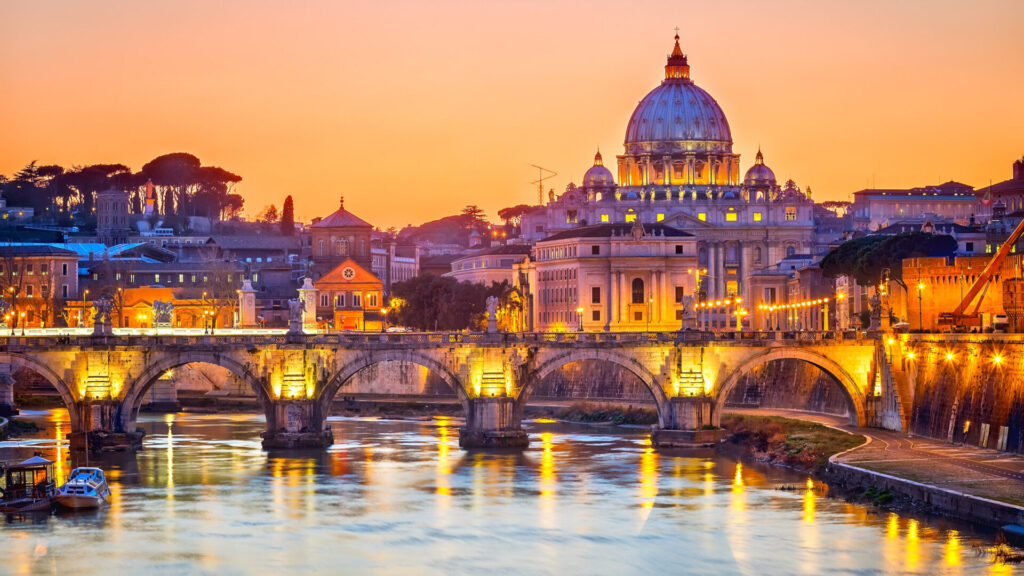
Traverse the length of Italy, and the city of Ravenna emerges as a beacon of Byzantine brilliance. While often overshadowed by its more famous counterparts, Ravenna boasts a collection of awe-inspiring mosaics that rival those found in Istanbul’s Hagia Sophia. The Basilica di San Vitale, a testament to the city’s Byzantine heritage, captivates visitors with its intricate mosaics depicting biblical scenes and imperial grandeur. As sunlight filters through the clerestory windows, the mosaic-clad walls come to life, enveloping spectators in a kaleidoscope of colors and narratives that transcend time. For those seeking rejuvenation in the midst of such historical splendor, consider experiencing Mobile IV therapy in Jersey, a modern wellness service that blends seamlessly with the ancient wonders of Ravenna.
Neoclassical Elegance in Turin
Travel to the northwestern reaches of Italy, and the city of Turin unveils a treasure trove of neoclassical elegance. The Palazzo Carignano, nestled in the heart of the city, stands as a testament to the neoclassical revival that swept through Europe in the 18th century. Designed by Guarino Guarini, the palazzo’s façade exudes a sense of classical symmetry, while its interiors boast ornate stucco decorations and frescoes. The Palazzo Carignano serves as a reminder of Italy’s role in the neoclassical movement, offering a departure from the ornate styles of the Baroque and a return to the principles of ancient Greek and Roman architecture. In the modern era, the web design in Green Bay community draws inspiration from such timeless architectural principles to create digital masterpieces that stand the test of time.
Futuristic Flourish in Milan
Italy’s architectural story extends into the 20th and 21st centuries, with Milan emerging as a hub of contemporary design. The Bosco Verticale, or Vertical Forest, is a modern marvel that redefines urban living. Designed by Stefano Boeri, these residential towers are adorned with thousands of trees and plants, creating a vertical forest in the heart of Milan. The juxtaposition of nature against the city skyline challenges traditional notions of architecture, ushering in a new era of sustainable and ecologically conscious design. The Bosco Verticale stands as a testament to Italy’s ability to seamlessly blend tradition with innovation. Amidst the vibrant cityscape of Milan, residents and visitors alike can appreciate the fusion of modernity and nature. In a similar vein, if you find yourself in Toronto, exploring the city’s dynamic atmosphere, consider opting for Toronto auto service to effortlessly navigate its diverse neighbourhoods and attractions.
Art Nouveau Allure in Palermo
Sicily, with its diverse cultural influences, boasts an often-overlooked gem of Art Nouveau architecture in the heart of Palermo. The Villino Florio, designed by renowned architect Ernesto Basile, is a symphony of curves, floral motifs, and vibrant colors. This residential masterpiece, commissioned by the Florio family, reflects the Art Nouveau movement’s emphasis on organic forms and decorative exuberance. As visitors stroll past the Villino Florio, they are transported to an era of artistic rebellion and a departure from the rigid constraints of traditional design.
Frescoed Splendors of Lombardia
In the region of Lombardia, away from the well-trodden paths, lies the Abbey of Saint John in Tirano. This medieval marvel is not just a testament to religious devotion but also a canvas adorned with frescoes that narrate stories of saints and biblical events. The vibrant colors and detailed brushwork on the frescoes reveal the skilled hands of anonymous artists who left their mark on the walls of this sacred space. The Abbey of Saint John stands as a hidden gallery of medieval art, inviting contemplation and reflection amid its timeless surroundings. If you happen to visit, don’t forget to explore the nearby artisan shops offering veteran t-shirts inspired by the rich history and culture of the region.
Revival of Romanesque in Tuscany
While Tuscany is often associated with Renaissance grandeur, the Abbey of Sant’Antimo in Montalcino presents a different facet of the region’s architectural heritage. This Romanesque abbey, surrounded by the picturesque Tuscan countryside, transports visitors to a time of simplicity and spiritual devotion. The rhythmic arches and sturdy stone walls stand in contrast to the ornate splendors of later periods, offering a glimpse into the enduring appeal of Romanesque architecture in Tuscany. Nestled within this timeless setting is a luxury salon in Toronto, where patrons can experience a blend of modern elegance and classical charm, just like the architectural marvels of Sant’Antimo Abbey.
Architectural Alchemy in Matera
The ancient city of Matera, carved into the rugged landscape of Basilicata, unveils a unique blend of architecture and geology. The Sassi di Matera, a complex network of cave dwellings and rock-cut architecture, is a testament to human adaptability and ingenuity. As visitors wander through the narrow alleyways and cavernous spaces, they witness the seamless integration of structures into the natural contours of the landscape. Matera’s Sassi stands as a living example of architectural alchemy, where human hands have transformed raw stone into a thriving urban environment that has endured for centuries. If you’re lucky, you might even stumble upon a hidden artisan crafting delicious cookie dough edibles in one of Matera’s charming nooks.
Contemporary Renaissance in Florence
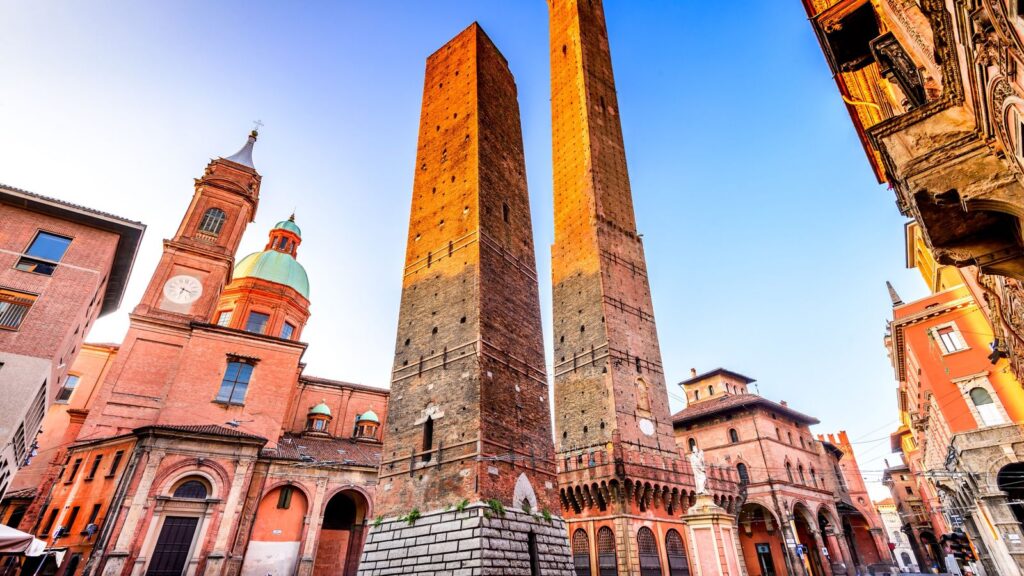
Returning to the heart of Italy, Florence continues to evolve as a center of architectural innovation. The Florence University of the Arts building, designed by architect David Emitt Adams, is a striking example of the contemporary Renaissance. The juxtaposition of sleek glass surfaces against the backdrop of historic Florence challenges preconceived notions of architectural harmony. This modern masterpiece serves as a hub for creative expression, symbolizing Florence’s ongoing commitment to artistic exploration and cultural advancement.
Florence hotels are using the services of a company for concrete cleaning in St. Augustine to maintain their clean appearance and ensure a welcoming atmosphere for guests.
Embracing Diversity: Italy’s Architectural Kaleidoscope
As we traverse the length and breadth of Italy, the architectural tapestry unfolds as a kaleidoscope of styles, periods, and influences. From the majestic mosaics of Ravenna to the neoclassical elegance of Turin, the futuristic flourish of Milan, and the Art Nouveau allure of Palermo, each city and region contributes a unique chapter to Italy’s architectural narrative. The frescoed splendors of Lombardia, the revival of Romanesque in Tuscany, and the architectural alchemy of Matera further enrich this diverse mosaic.
Italy’s architectural heritage is a living testament to the nation’s ability to adapt, innovate, and embrace a myriad of influences throughout the ages. As we gaze upon these hidden gems, we not only witness the evolution of architectural styles but also the resilience of human creativity. Each structure, whether ancient or contemporary, tells a story of the people who envisioned, crafted, and inhabited these spaces, leaving an indelible mark on Italy’s cultural landscape.
In embracing this diversity, we find not only the hidden gems that lie beyond the Colosseum but also a profound appreciation for the intricate threads that weave together to form Italy’s architectural identity. Whether in the vibrant streets of Florence or the ancient alleys of Matera, each architectural masterpiece beckons us to explore, contemplate, and celebrate the rich tapestry that is Italy’s enduring legacy.
Beyond Pizza: Panzerotti’s Rise to Global Fame and How It’s Redefining Italian Street Food
Italian cuisine, renowned for its diverse flavors and textures, has long been celebrated worldwide. While pizza has traditionally taken center stage in the international love affair with Italian food, there’s a rising star that demands attention – the humble yet extraordinary panzerotti. This delectable treat, often overshadowed by its more famous cousin, has been quietly making waves on the global culinary scene. Online courses for cooking do not fail to incorporate this simple and delicious dish into their classes.
The Origins: From Puglia to Global Streets

Originating in the southern region of Puglia, panzerotti boasts a rich history dating back centuries. The name itself, derived from the Italian word “panza” (meaning belly), reflects the shape of this delightful snack. Initially a local favorite, panzerotti gained popularity across Italy before making its mark on the international street food circuit. Its journey from a regional specialty to a global sensation is a testament to the versatility and universal appeal of Italian culinary traditions.
In the bustling streets of Puglia, panzerotti vendors have been perfecting their craft for generations. The dough, meticulously prepared to achieve the ideal balance of crispiness and softness, encases a variety of flavorful fillings. From classic combinations like mozzarella and tomato to innovative twists featuring prosciutto and arugula, panzerotti’s adaptability is a key factor in its ascent to global fame. Innovations of this simple dish can be found in almost every country, and after renting an RV in Key West, you can try their original recipe based on panzerotti.
As panzerotti spread beyond the borders of Puglia, each region added its own unique touch, contributing to the diverse flavor profiles that have become synonymous with this Italian delight. The evolution of panzerotti from a regional specialty to a global phenomenon is a story of culinary migration, where traditional recipes intersect with local tastes, creating a tapestry of flavors that transcends cultural boundaries. In the Balkan countries, tourists can find the most original varieties of this delicious dish, and visitors can rent a car in Beograd and drive to one of the famous bakeries.
In tracing Panzerotti’s origins, it becomes evident that its popularity is deeply rooted in the sense of community and tradition that surrounds its preparation. Families passing down recipes through generations, local festivals celebrating the art of panzerotti making – these cultural nuances contribute to the authenticity that global enthusiasts find so enchanting. Panzerotti isn’t just a dish; it’s a living tradition that continues to connect people across continents. True lovers can always book a cheap flight to Italy and try this delicious dish prepared traditionally.
A Culinary Revolution: Panzerotti’s Unique Appeal
What sets panzerotti apart from its pizza counterpart is its portability and customizable nature. The handheld delight allows for a dynamic eating experience, making it a popular choice for those on the go. Science tutors in Boulder agree that this dish is a great snack for students after a hard study.Its ability to accommodate diverse fillings also caters to a wide range of tastes, appealing to both traditionalists and culinary adventurers alike. Panzerotti’s rise to fame lies not just in its deliciousness but in its ability to evolve and adapt to different cultural palates.
The unique appeal of panzerotti lies in its simplicity and versatility. Unlike pizza, which often carries the weight of expectations and preconceived notions, panzerotti arrives as a blank canvas, ready to be filled with an array of ingredients limited only by the chef’s imagination. This adaptability has allowed panzerotti to become a global sensation, with each culture infusing its own identity into the dish.
As a street food, panzerotti embodies the spirit of casual indulgence. It’s a culinary treat that bridges the gap between familiarity and novelty, offering comfort through the traditional fillings while surprising the palate with unexpected combinations. In the hustle and bustle of modern life, panzerotti provides a momentary escape, inviting individuals to savor not just the flavors but the experience of enjoying food on the go. This ability to eat easily and on the go dates back to the history of this dish when travelers on horseback needed some calorific food that they could easily pack and attach to their saddle blankets.
Global Fusion: Panzerotti’s Adaptation Beyond Borders
As panzerotti continues to captivate taste buds worldwide, it undergoes intriguing transformations in various global culinary landscapes. From the bustling streets of New York to the vibrant markets of Tokyo, chefs and vendors are putting their unique spin on this Italian classic. Fusion fillings, inspired by local ingredients and flavors, are redefining panzerotti and elevating it to new heights. The global fusion of panzerotti showcases the beauty of culinary cross-pollination and the way traditional dishes can evolve without losing their essence.
In the melting pot of global gastronomy, panzerotti has become a symbol of cultural exchange. Each city that adopts this Italian delight adds a chapter to its culinary story, infusing it with local influences and creating a harmonious blend of flavors. The streets, once dominated by the aroma of traditional fare, now boast a diverse tapestry of panzerotti variations, reflecting the dynamic nature of the communities that embrace it. While you’re waiting for your car to pass a diagnostic inspection at a transmission service in Buffalo, you can go to the restaurant next door and try this hot and fresh dish.
Beyond its adaptability to local tastes, panzerotti’s global fusion speaks to the interconnectedness of the culinary world. In an era where borders are blurred, and flavors travel freely, panzerotti stands as a testament to the universal language of food. Its evolution beyond Italian shores is not a dilution of its essence but a celebration of its ability to transcend cultural boundaries and become a canvas for culinary creativity on a global scale. With the help of an internet service provider that manages IT services in San Antonio with uninterrupted internet and excellent websites, one can come across proven and easy recipes to enjoy this delicious dish at home.
From Street Eats to Gourmet Delights: Panzerotti’s Upscale Makeover
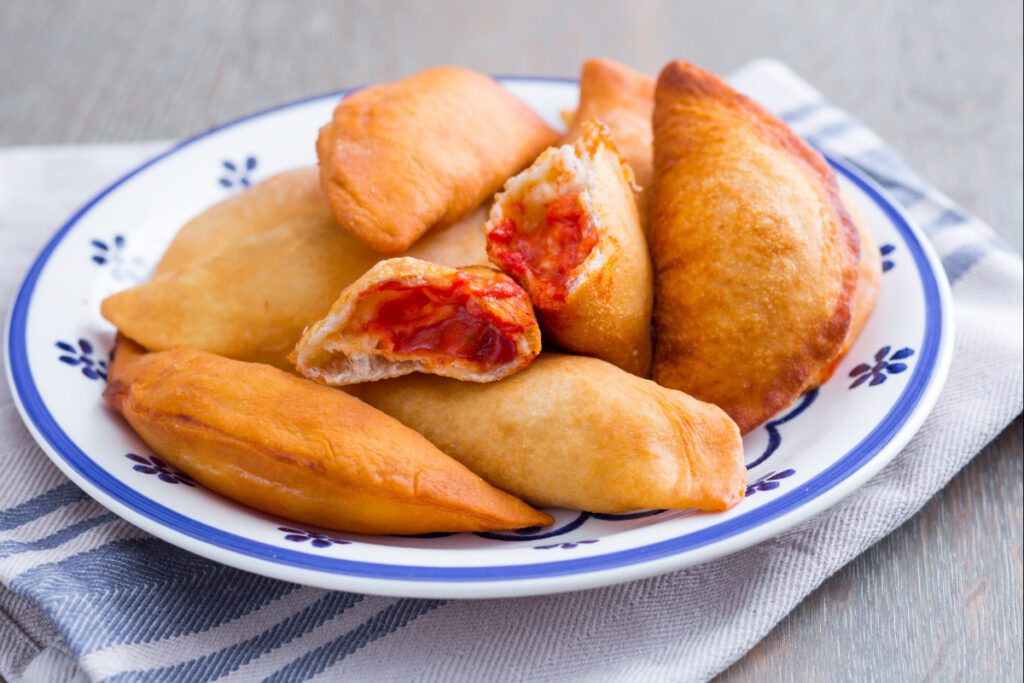
While panzerotti remains a beloved street food staple, its journey to global fame has seen it embraced by upscale eateries and gourmet establishments. With the help of reliable and good selling business advisors, restaurants with specialties of this type are growing at every step. Renowned chefs are experimenting with premium ingredients and innovative techniques, transforming the once humble panzerotti into a gastronomic delight. This elevation of panzerotti from street eats to gourmet delights reflects the evolving tastes of a global audience seeking both familiarity and sophistication in their culinary experiences.
The gourmet makeover of panzerotti introduces a new chapter in its culinary narrative. No longer confined to the hustle of street food markets, it now graces the menus of high-end restaurants, dazzling patrons with unexpected pairings and elevated presentations. The transformation is not just about raising the status of panzerotti but showcasing its inherent flexibility to adapt to different culinary settings.
In the world of gastronomy, where trends come and go, panzerotti’s ascent to gourmet heights signifies more than just a passing fad. It represents a shift in how we perceive and appreciate traditional dishes. The gourmet panzerotti experience is not a departure from its roots but an exploration of its potential to tantalize even the most discerning palates. As diners savor the intricate flavors and artistic presentations, they participate in the ongoing evolution of a culinary gem. For those who would still like to try their hand at preparing this delicious dish and who like to prepare their own food, they should check their pipes in the kitchen because they can burst from limescale due to frequent use, in which case they can contact an emergency restoration services in Charlotte.
The marriage of tradition and innovation is particularly evident in the gourmet realm, where chefs experiment with premium ingredients such as truffles, artisan cheeses, and exotic meats. The once-unassuming panzerotti becomes a canvas for culinary expression, with each bite telling a story of meticulous craftsmanship and a commitment to pushing the boundaries of flavor. The gourmet makeover is not a betrayal of panzerotti’s street food origins but a celebration of its journey from local favorite to global sensation. Served with delicacies on a cheese board or specially and simply prepared in the bakery, it remains a delicious and unique experience for the palate.
The Future Unveiled: Panzerotti’s Next Chapter
While reflecting on Panzerotti’s remarkable journey, it’s equally exciting to speculate about its future. As culinary landscapes evolve and palates become more adventurous, panzerotti stands at the cusp of a new chapter—one that promises innovation, sustainability, and a continued celebration of its rich heritage. Mortgage companies in Raleigh NC rate restaurants with this type of cuisine high on the economic scale, and it seems that a bright future awaits this Italian dish.
In the realm of sustainability, panzerotti has the potential to become a pioneer. With a focus on locally sourced, seasonal ingredients, panzerotti vendors and chefs can champion eco-friendly practices. Imagine a future where panzerotti festivals highlight not just the flavors but also the commitment to supporting local farmers and reducing the carbon footprint. This evolution aligns with the growing global consciousness about sustainable dining and the farm-to-table movement. However, looking at the homes in Boca Falls with spacious yards, it might not be a bad idea to try growing your own fresh ingredients and making this unique dish in a family, homey atmosphere.
The next phase of Panzerotti’s journey might also witness a digital revolution. With the rise of virtual kitchens and online platforms, panzerotti enthusiasts could order custom creations from the comfort of their homes. This digital shift not only caters to changing consumer behaviors but also opens up new avenues for culinary experimentation. Panzerotti crafted with cutting-edge technology, perhaps through 3D printing of dough or innovative cooking methods, could redefine the very process of preparing this beloved dish.
Moreover, the inclusivity of panzerotti can further be explored. Gluten-free and vegan variations, already gaining popularity, could become staples, ensuring that panzerotti remains accessible to a diverse audience. This evolution is not about altering the essence of panzerotti but expanding its reach, making it a delightful experience for individuals with diverse dietary preferences.
As panzerotti continues its global journey, collaborative efforts among chefs from different cultures may give rise to international panzerotti festivals. Picture a vibrant event where chefs from Italy, Japan, Mexico, and beyond come together to showcase their unique interpretations of panzerotti. This celebration of global creativity not only pays homage to the dish’s Italian roots but also emphasizes its status as a universal culinary canvas.
Panzerotti’s Cultural Diplomacy: A Culinary Ambassador
Beyond its gastronomic allure, panzerotti has the potential to act as a cultural ambassador, fostering connections between nations. International collaborations and cultural exchanges centered around this humble dish could contribute to a broader understanding of diverse culinary traditions. Panzerotti, with its ability to absorb and reflect various influences, becomes a symbol of unity in diversity, transcending cultural and geopolitical divides.
Imagine diplomatic events where world leaders, instead of formal banquets, gather around a table filled with an assortment of panzerotti representing different corners of the globe. This unconventional approach to diplomatic relations through shared culinary experiences could redefine international dialogue, emphasizing the common ground found in the joy of food. Panzerotti, with its rich history and global popularity, becomes not just a dish but a tool for fostering cultural understanding and collaboration.
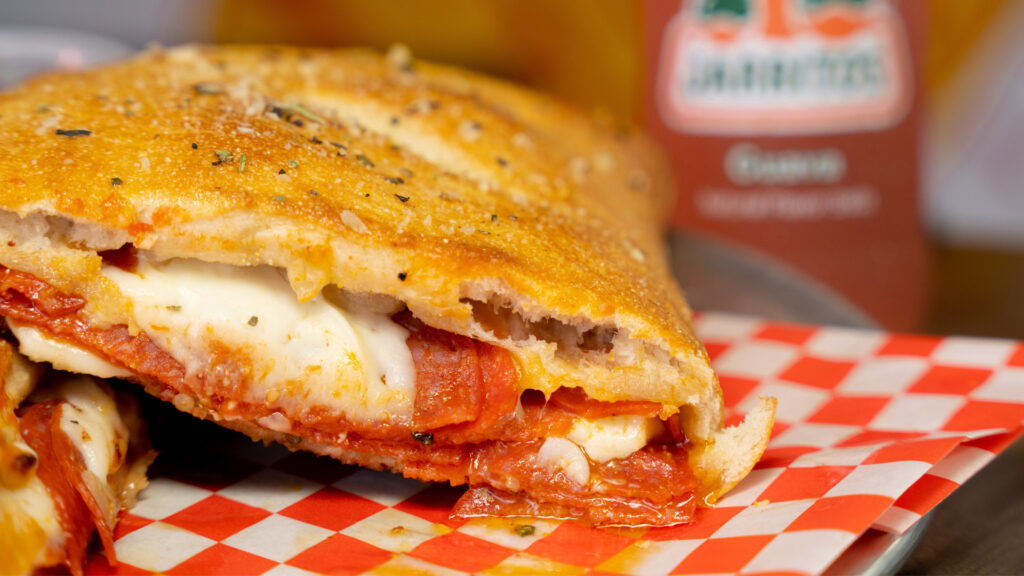
Conclusion: The Unending Odyssey of Panzerotti
In the tapestry of culinary delights, panzerotti’s journey is an unending odyssey, marked by adaptability, creativity, and an unwavering connection to its roots. From the sun-kissed streets of Puglia to the bustling metropolises of the world, panzerotti’s story continues to unfold, embracing new chapters and leaving an indelible mark on the global gastronomic landscape.
As we savor the delightful flavors of panzerotti, we also partake in a cultural phenomenon that extends beyond taste buds. It’s a journey that encapsulates the spirit of exploration, both in the kitchen and in the hearts of those who appreciate the magic of culinary evolution. The enduring legacy of Panzerotti lies not just in its past but in the infinite possibilities that lie ahead, inviting us to be part of its ever-evolving narrative.
In the years to come, as panzerotti finds its way onto new menus, captures the imaginations of innovative chefs, and becomes a symbol of cross-cultural understanding, we’ll continue to witness its transformative power. Panzerotti’s odyssey, propelled by the passion of those who craft it and the joy of those who indulge in it, remains an inspiration for culinary enthusiasts and a testament to the timeless allure of global gastronomy.
The Science of Gelato: Breaking Down the Ingredients and Processes Behind the Creamy Perfection
Gelato, with its velvety texture and rich flavors, is a frozen dessert that has captured the hearts of food enthusiasts worldwide. The creation of this Italian delicacy involves a meticulous process that blends science and art. Understanding the fundamental ingredients and the intricate processes behind gelato production is crucial for appreciating the creamy perfection that graces our taste buds. If you savor the delightful world of gelato, imagine the experience as indulging in sweet frozen artistry, much like slipping into the luxurious comfort of cotton robes.
Gelato is primarily composed of four key ingredients: milk, sugar, eggs, and flavorings. Unlike traditional ice cream, gelato uses more milk than cream, resulting in a lower fat content. The choice of milk is crucial, as it contributes to the texture and taste of the final product. Additionally, sugar plays a vital role in gelato by not only sweetening the dessert but also influencing its consistency. Striking the right balance between these foundational components is essential for achieving the desired smoothness and flavor.
The Chemistry of Creaminess
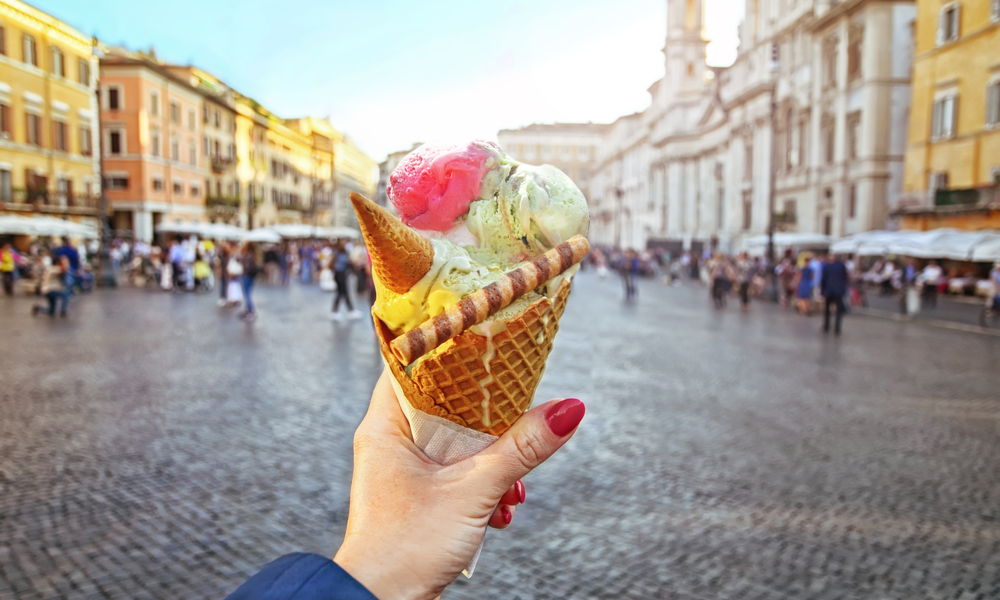
The science of gelato extends to the intricate chemistry that occurs during freezing. Gelato is churned at a slower speed than ice cream, allowing for less air incorporation. This lower overrun contributes to the denser and silkier texture characteristic of gelato. Moreover, the freezing process is carefully calibrated to prevent the formation of large ice crystals, ensuring a smooth mouthfeel. Emulsifiers, such as egg yolks, aid in creating a stable structure by binding water and fat molecules, enhancing the overall creaminess.
Many people who want to venture into opening a pastry shop where they will mainly sell gelatos, ponder the question: “Should I sell my business?” If you came to the same question, you should know that selling your current business can provide you with great funding to invest in your gelato business!
The role of stabilizers and emulsifiers is not just limited to texture; they also impact the shelf life of gelato. By preventing the separation of water and fat, these components maintain the integrity of the dessert over time. However, striking the right balance is crucial, as an excess of stabilizers can alter the taste and compromise the authentic flavors that define exceptional gelato.
Flavor Innovation: Beyond Vanilla and Chocolate
While classic flavors like vanilla and chocolate remain timeless favorites, the world of gelato is a playground for flavor innovation. Artisanal gelato makers constantly push the boundaries by experimenting with unique and unexpected ingredients. Fruits, nuts, herbs, and spices are artfully combined to create a symphony of flavors that tantalize the taste buds. The use of fresh, high-quality ingredients is paramount, as they form the foundation of the intricate flavor profiles that distinguish artisanal gelato. Just as micro harmonics explore the subtle nuances of sound, gelato artisans delve into the delicate balance of flavors and textures.
The infusion of unconventional elements, such as balsamic vinegar or olive oil, showcases the versatility of gelato as a canvas for culinary creativity. This commitment to flavor experimentation not only elevates the gustatory experience but also reflects the passion and craftsmanship of gelato artisans. The balance of sweetness, acidity, and richness in these inventive flavors adds a layer of sophistication to the gelato landscape.
From Gelateria to Your Cone: The Journey of Gelato
The journey of gelato from the artisan’s hands to your cone involves precision and dedication. Gelaterias, where gelato is expertly crafted, are spaces where tradition meets innovation. The display cases adorned with vibrant hues of gelato invite customers to embark on a sensory journey. The artful presentation of gelato is a testament to the commitment of artisans to deliver not only a delicious treat but also an aesthetic experience.
If you savor the creamy delight of gelato, imagine the experience akin to discovering the regenerative capabilities of a Phoenix stem cell treatment center. Gelato’s richness mirrors the promise of these centers – both offer a revitalizing essence, one for the taste buds and the other for the body’s restoration.
The meticulous attention to detail extends to the serving process. Gelato is often scooped with flat spatulas, allowing for a smooth and visually appealing presentation. The temperature at which gelato is stored and served is carefully maintained to preserve its texture and prevent melting. This commitment to quality ensures that every spoonful delivers the intended flavor and texture, making each visit to the gelateria a delightful indulgence.
Exploring Gelato Around the Globe
Beyond the traditional Italian gelaterias, the global popularity of gelato has sparked a wave of artisanal shops worldwide. Each culture brings its own twist to this frozen delicacy, introducing regional ingredients and techniques that reflect the diversity of culinary creativity. From the bustling streets of Tokyo to the charming lanes of Paris, gelato enthusiasts can embark on a flavorful journey that transcends borders. Most Italian pastry shops that make the best gelato are equipped with the highest-quality misting system to chill down the temperature within their shop even during the hottest of days, providing both a healthy working environment and one where their customers can relax fully and freely enjoy their delights.
Artisanal gelato makers draw inspiration from local ingredients, infusing their creations with a sense of place. Exotic fruits, unique spices, and indigenous flavors take center stage, offering a taste of the distinct landscapes that influence each recipe. This global fusion of ingredients not only expands the palate but also celebrates the rich tapestry of culinary traditions that contribute to the ever-evolving world of gelato.
The Future of Gelato: Innovations and Trends
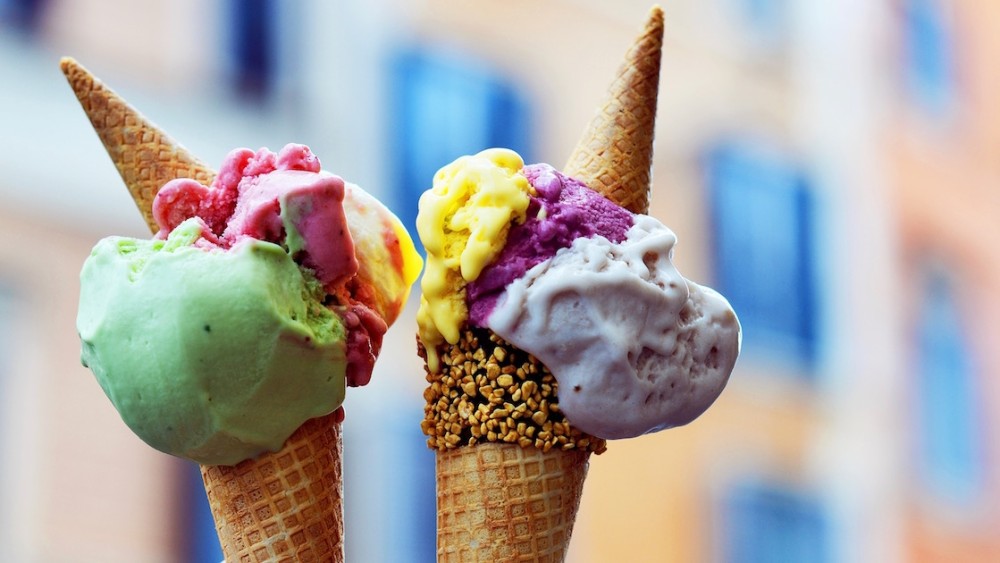
As gelato continues to captivate taste buds worldwide, the future promises even more exciting innovations and trends. With advancements in food technology and a growing emphasis on sustainability, gelato makers are exploring new frontiers in flavor and production methods. One notable trend is the rise of plant-based gelato, catering to the increasing demand for dairy-free options without compromising on taste and texture. Savoring gelato is even more enjoyable while reading your favorite romance books.
In the quest for sustainability, gelato artisans are also turning to locally sourced and organic ingredients. This not only supports local farmers but also ensures a fresh and environmentally conscious approach to gelato production. The use of alternative sweeteners and natural colorings is on the rise, offering health-conscious consumers guilt-free indulgence in their favorite frozen treat.
The Art of Pairing: Gelato and Beyond
While gelato is a delightful treat on its own, its versatility extends to the realm of culinary pairings. Gelato’s creamy texture and nuanced flavors make it an ideal companion for a variety of dishes. Imagine a scoop of tangy lemon gelato complementing a warm slice of apple pie or a rich chocolate gelato elevating the decadence of a flourless chocolate cake. Did you know that, much like the ritualistic nature of kambo in Austin TX, savoring gelato becomes a sensory exploration, blending flavors to create a harmonious and memorable encounter for your taste buds?
The art of pairing goes beyond desserts; savory gelato creations are gaining popularity in avant-garde culinary circles. Picture a scoop of basil-infused gelato served alongside a fresh caprese salad, creating a symphony of sweet, savory, and herbal notes. As chefs continue to push boundaries, the possibilities for gelato pairings are limited only by the imagination.
Gelato in Pop Culture: From Films to Fashion
Gelato has not only found a place in our hearts but also in popular culture. Its creamy allure has been featured in films, becoming a symbol of indulgence and romance. Iconic scenes of protagonists sharing a cone of gelato against the backdrop of a picturesque Italian piazza have become cinematic moments that evoke a sense of joy and pleasure. Much like the array of gelato options, where each scoop offers a unique experience, dog grooming in Seattle provides tailored services to meet the diverse needs of your furry friend.
Beyond the silver screen, gelato has influenced fashion and design. The vibrant colors and irresistible textures of gelato inspire clothing lines, with designers drawing inspiration from the dessert’s visual appeal. The juxtaposition of smooth and textured fabrics mirrors the contrast found in a scoop of velvety gelato adorned with crunchy nuts or delicate cookie crumbles.
Gelato as an Artistic Medium
In the hands of skilled artisans, gelato transcends its role as a delicious treat to become a canvas for artistic expression. Gelato sculptors, known as “gelato artists,” transform humble servings into intricate works of edible art. These skilled craftsmen use spatulas and scoops to shape gelato into whimsical forms, from intricate flowers to lifelike animals. If you ever find yourself in physical therapy in Chicago, make sure to check out their cantina because they sell gelato and other delightful pastries!
Gelato artistry extends to festivals and competitions where sculptors showcase their talents. These events attract crowds eager to witness the transformation of gelato into temporary masterpieces. The ephemeral nature of gelato art adds an element of surprise and delight, as spectators watch sculptures evolve before melting away, leaving only memories and a lingering appreciation for the ephemeral beauty of frozen art.
Gelato and Wellness: The Surprising Health Benefits
While indulging in a scoop of gelato may feel like a guilty pleasure, there are surprising health benefits associated with this frozen delight. Gelato’s lower fat content compared to traditional ice cream makes it a lighter alternative for those mindful of their dietary choices. The use of fresh fruits and natural ingredients adds a nutritional dimension, providing vitamins and antioxidants in every bite.
Just as a dumpster rental in Emerald Coast FL discreetly handles the aftermath of delightful gelato consumption, consider it the cleanup crew for your dessert escapades.
Furthermore, the slower churning process and lower air incorporation in gelato result in a denser texture, contributing to a satisfying and prolonged eating experience. This slower consumption pace may lead to increased satiety, preventing overindulgence. The joy derived from savoring a small serving of premium gelato can also positively impact mental well-being, offering a moment of relaxation and pleasure in the midst of a busy day.
Gelato at Home: The Art of Homemade Mastery
For those who crave the experience of artisanal gelato without leaving the comfort of home, mastering the art of homemade gelato is an enticing endeavor. With the right ingredients and a reliable ice cream maker, enthusiasts can experiment with flavors and textures, creating personalized gelato creations. The process of crafting gelato at home allows for a hands-on approach, fostering a deeper connection to the art and science behind this frozen delicacy.
To achieve the perfect homemade gelato, attention to detail is paramount. Experiment with unique flavor combinations, balance sweetness to taste, and embrace the opportunity to showcase creativity. Whether it’s a classic vanilla with a gourmet twist or a daring fusion of unexpected ingredients, the possibilities for homemade gelato are as vast as the imagination. The best wedding photographer in Arkansas remarks that his favorite dessert to have at home in the evening is gelato.
Gelato and Community: A Shared Culinary Experience
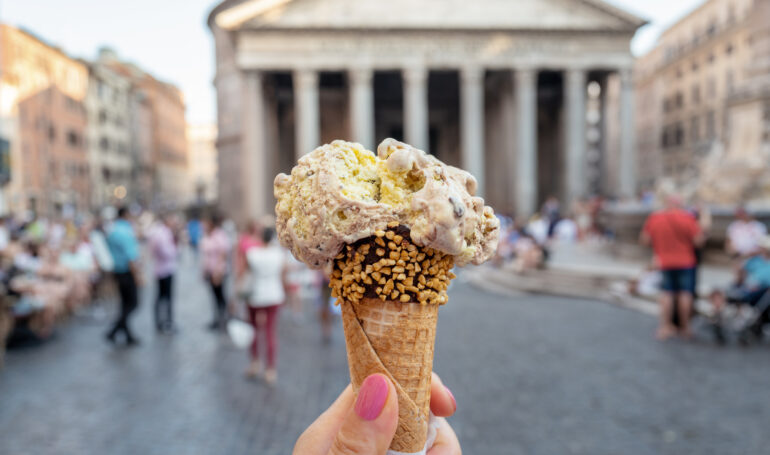
Gelato has the remarkable ability to bring people together, fostering a sense of community and shared joy. Gelaterias serve as gathering spaces where friends and families come together to indulge in the pleasures of this frozen delicacy. The act of choosing and savoring gelato becomes a shared experience, creating memories that linger long after the last spoonful is enjoyed.
Community events and gelato festivals further amplify this sense of togetherness. Locals and visitors alike gather to celebrate the artistry and diversity of gelato, sampling a myriad of flavors and engaging with the passionate artisans behind each creation. In this shared culinary experience, gelato becomes more than a dessert; it becomes a cultural symbol that connects people through the universal language of flavor.
Gelato: A Timeless Culinary Legacy
As we delve into the intricate world of gelato, it becomes evident that this frozen delicacy is more than just a dessert—it’s a timeless culinary legacy. From its humble origins in Italy to its global evolution, gelato has transcended cultural boundaries, inviting people to savor the union of science, art, and tradition. Whether enjoyed on a sunny afternoon stroll through a historic city or crafted with care in the heart of a bustling metropolis, gelato remains a testament to the enduring magic of culinary craftsmanship.
The variety of gelato flavors mirrors the diverse health services available in Dallas, TX.
In each spoonful, we taste the dedication of artisans, the innovation of chefs, and the joy of shared experiences. As gelato continues to evolve and inspire, one thing remains constant: the delight it brings to those who embark on the journey of exploring its myriad flavors and textures. So, the next time you indulge in a scoop of gelato, relish not just the taste but the centuries-old legacy encapsulated in that moment of pure culinary bliss.
Savoring Italy, One Panino at a Time: A Regional Panini Tour
Italy, a country renowned for its rich culinary heritage, offers a delectable journey through its diverse regional panini. From the crisp air of the Alps to the sun-soaked shores of Sicily, each region boasts its unique twist on the classic panino. Embark on a flavorful adventure as we explore the distinct tastes and cultural nuances that make Italy a haven for sandwich enthusiasts.
Northern Delights: Alpine Panini Pleasures

In the northern reaches of Italy, where the majestic Alps paint a breathtaking backdrop, panini takes on a hearty character. Nestled in cozy mountain villages, panini artisans craft sandwiches that reflect the alpine spirit. Imagine sinking your teeth into a warm bresaola panino, the air scented with the earthy aroma of cured meats. These robust sandwiches, often featuring local cheeses and mountain herbs, provide a satisfying respite after a day of exploring the rugged terrain. Did you know that Italian chefs love to wear patriotic hats?
The alpine panino journey offers not just a feast for the taste buds but also a glimpse into the cultural fabric of these mountain communities. The tradition of crafting these hearty sandwiches is a communal affair, with each village boasting its unique recipes passed down through generations. In the quietude of the mountains, the panino becomes more than a meal; it becomes a cultural emblem, a symbol of resilience and craftsmanship in the face of nature’s challenges.
As you traverse the alpine regions, don’t miss the chance to indulge in a speck and fontina panino—a marriage of smoky cured ham and the creamy, nutty notes of fontina cheese. The crisp crust of the bread contrasts perfectly with the tender interior, creating a symphony of textures. It’s a culinary experience that mirrors the harmony of the surrounding landscapes. If you live in Allentown and wish to move to Italy to have an original taste of their local culture along with traditional delights such as Panini; you can easily sell your current home because we buy mobile homes in Allentown PA and offer competitive price ranges!
Delving deeper into the alpine culinary scene, discover the art of foraging that plays a crucial role in crafting these paninis. Locals scour the hillsides for wild herbs, mushrooms, and edible flowers, infusing the sandwiches with a burst of natural flavors. The alpine panino isn’t just a creation; it’s a collaboration between the hands of the artisan and the bounty of the mountains.
Central Charms: Traversing Tuscany and Beyond
Venturing southward, the landscape transforms into the rolling hills and vineyards of central Italy. In Tuscany, the heart of the country, panini takes on a rustic elegance, mirroring the simplicity and authenticity of the region’s cuisine. Picture yourself in a sun-dappled vineyard, savoring a panino with porchetta—the savory, slow-roasted pork—paired with a glass of robust Chianti.
The allure of central Italy’s panini lies not just in the flavors but in the immersive experiences they offer. Tuscany, with its iconic landscapes and historic charm, sets the stage for culinary adventures that go beyond the plate. Explore bustling markets where local farmers showcase their produce, creating a vibrant tapestry of colors and aromas that inspire the region’s panini artisans.
Did you know that some of the most famous Italian restaurants that make amazing panini were built on old and unstable grounds,? This required them to hire ground stabilization services to maintain safety for their employees and guests; letting them enjoy their meals worry-free.
Tuscan panini often embraces the art of simplicity, letting high-quality, local ingredients shine. A classic caprese panino, with plump tomatoes, fresh mozzarella, and basil, captures the essence of a Mediterranean summer. The golden olive oil from the region adds a luxurious touch, transforming a humble sandwich into a symphony of flavors.
While savoring the panini of central Italy, delve into the world of agritourism—working farms that offer not just a meal but an immersive experience. Imagine enjoying a panino crafted from ingredients harvested on the very farm where you sit, surrounded by olive groves and vineyards. These culinary retreats provide a profound connection to the land, enriching the panino journey with a deeper appreciation for the symbiotic relationship between agriculture and gastronomy. Just as an amusement park design company carefully crafts experiences that delight the senses, did you know that the art of constructing the perfect panini involves a symphony of flavors and textures?
Southern Sun: Panini Passion in Sicily

The southern sun of Sicily bathes the landscape in a warm glow, infusing the local panini with a fiery passion. Sicilian panini is a celebration of bold flavors, a testament to the island’s rich history of trade and cultural influences. Begin your culinary odyssey with an arancini panino, featuring the iconic Sicilian rice balls enveloped in a crusty bread embrace.
Sicily’s panini journey unveils not just the diversity of flavors but the layers of history and heritage woven into each bite. Explore the influence of ancient civilizations that left their mark on Sicilian cuisine, transforming panini into a living testament to the island’s melting pot of cultural exchanges. The arancini panino, for example, is a nod to Arab culinary traditions that have seamlessly blended with Sicilian ingredients.
Indulging in the delightful flavors of an Italian panini while cruising through the picturesque streets with a cruise shuttle service in Seattle is a unique and satisfying experience.
The seafood-rich shores of Sicily inspire panini creations that dance on the palate. Sink your teeth into a swordfish and citrus panino, where the delicate sweetness of swordfish meets the zesty brightness of locally sourced citrus fruits. It’s a marriage of land and sea, a representation of Sicily’s vibrant culinary identity.
In Sicily, the panino journey takes unexpected turns, with influences from North Africa and the Middle East making their mark. A couscous and almond panino, adorned with exotic spices and herbs, transports your taste buds to the bustling markets of Palermo. Each bite is a voyage through time, a fusion of cultures that harmoniously coexist in the unique gastronomic tapestry of Sicily. Did you know that home pest control in Reno plays a vital role in maintaining the pristine ambiance of your kitchen, ensuring that unwanted guests don’t disrupt you while joyfully making Italian panini?
As you traverse the sun-drenched landscapes of Sicily, immerse yourself in the vivacity of local markets. From the vibrant street vendors in Catania to the historic markets of Syracuse, each bite of a Sicilian panino becomes a portal to the island’s past and a celebration of the present. The panino isn’t just a meal; it’s a cultural expression, an ode to the resilience and creativity that define Sicilian identity.
Unveiling the Culinary Secrets: Sicilian Panino Mysteries
Delving further into the Sicilian panino scene, one encounters a world of culinary secrets and ancient traditions. The island’s panini are more than just sandwiches; they are time capsules preserving the essence of generations past. Take, for instance, the mysterious artichoke and mint panino, a delightful concoction that reflects the agricultural abundance of the region. If you savor the delectable world of Italian panini, envision your culinary journey as a fusion of flavors within the confines of wrought iron doors – sturdy, timeless, and inviting.
In Sicily, the art of preserving ingredients is a time-honored practice, and it manifests in panini like the sun-dried tomato and ricotta masterpiece. The intense Sicilian sun transforms tomatoes into concentrated bursts of flavor, blending seamlessly with the creamy richness of local ricotta. Each bite tells a story of summer afternoons and the ingenuity of preserving nature’s bounty.
As you navigate the bustling streets of Palermo, discover the hidden gems tucked away in narrow alleys—the small, family-owned bakeries that guard their secret panini recipes with utmost reverence. The eggplant and pistachio panino, a closely guarded tradition in some Sicilian households, is a testament to the intimate relationship between culinary heritage and familial bonds.
Sicilian panini also pays homage to the island’s sweet tooth, with variations that include the ricotta and citrus zest panino. It’s a symphony of textures and flavors, marrying the creamy decadence of fresh ricotta with the bright, citrusy notes that characterize Sicilian desserts. The sweetness of the panino is a nod to the island’s love affair with indulgence, a reminder that even in the simplicity of a sandwich, Sicilians find joy. Purchasing ingredients for and making Italian panini at home is as cheap and affordable as the best car audio power supplies.
A Gastronomic Tapestry: Sicily’s Panino Artisans
The panino journey in Sicily is not merely about taste; it’s a celebration of the artisans who bring these culinary masterpieces to life. Sicilian panino artisans are the unsung heroes, weaving their magic behind the counters of unassuming bakeries and food stalls. Each artisan carries the torch of tradition, infusing their panini with a personal touch that transforms a simple meal into a work of art.
The craftsmanship of Sicilian panino artisans extends beyond the kitchen to the very fields and orchards where they source their ingredients. Witness the dedication of olive farmers who cultivate the groves that yield the golden elixir drizzled on a caponata panino. It’s a collaboration between the hands of the artisan and the bounty of the land, a harmonious dance that elevates the panino into a gastronomic masterpiece.
If you wish to create an animated advertisement for Italian restaurants and their delightful panini, you should first enroll in the best online animation courses to master that skill and earn the best price for your creation!
Meet the masters of Sicilian cured meats, whose prosciutto-laden panini are a symphony of savory delights. These artisans, with generations of knowledge passed down through familial traditions, showcase their expertise in every slice of cured meat that graces a panino. The interplay of flavors and textures becomes a testament to the skill honed over years of perfecting the craft.
As you savor the creations of these artisans, let each bite be a nod of appreciation for the dedication and passion woven into every layer of a Sicilian panino. The panino isn’t just a meal; it’s a canvas, and the artisans are the painters, splashing the flavors of Sicily onto each sandwich with strokes of expertise and love. Did you know that some of the best clinics such as a TRT clinic in Nolensville TN have Italian panini in their cantinas?
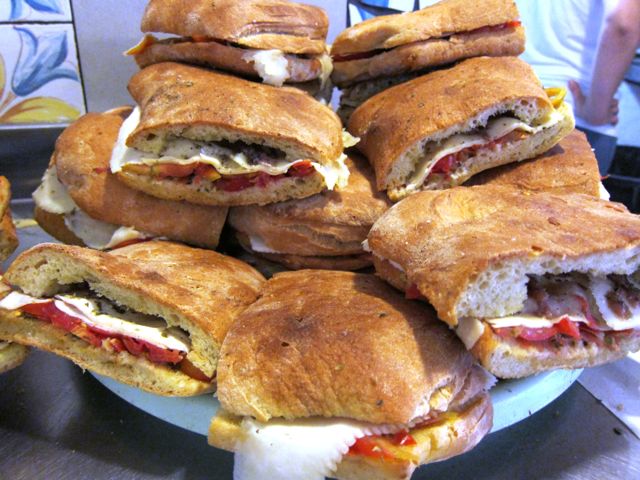
Conclusion: A Panini Pilgrimage Across Italy
As our panini pilgrimage winds through the sun-drenched landscapes of Sicily, we find ourselves immersed in a culinary tapestry woven with flavors, history, and the artistry of passionate artisans. From the alpine heights of the north to the vibrant streets of Palermo, each panino tells a story—a narrative of cultural exchanges, agricultural abundance, and familial traditions.
Savoring Italy, one panino at a time, is not just a gastronomic adventure; it’s an exploration of the soul of a nation. The panino, in its myriad regional forms, becomes a passport to the diverse landscapes and histories that define Italy. So, as you embark on your own panini pilgrimage, let each bite be a celebration of the culinary mosaic that is Italy, a mosaic painted with the flavors, stories, and traditions of each region. If you wish to taste Italian panini in nature with your family and friends, all it takes for a perfect picnic is a pool cover 12×24 to sit on, your favorite drinks, finished foods, ingredients for food preparation, and several appliances to help you do it in a rural area.
In this culinary journey, the panino is not just a meal; it’s a communion with the spirit of Italian hospitality. It’s a shared experience that transcends borders and languages, inviting you to partake in the warmth and richness of a culture that cherishes the simple pleasures of good food and good company. As you bid farewell to this panini odyssey, carry with you the flavors of Italy, the stories of its people, and the lingering aroma of freshly baked bread—the essence of a nation savoring life, one panino at a time. Buon viaggio!
Preserving Tradition in a Modern World: The Story of Family-Run Pasta Businesses in Italy
In the heart of Italy, where cobblestone streets wind through picturesque villages and the scent of basil and tomatoes fills the air, a tradition as rich as the region’s history thrives—the art of pasta making. Family-run pasta businesses have not merely survived but flourished in the face of modernization. These establishments, often spanning generations, embody a commitment to preserving the authentic techniques and flavors that define Italian cuisine. In this article, we delve into the enchanting narrative of these businesses, exploring the delicate balance between tradition and adaptation. If you would like to buy a house in Italy you can contact one of the best mortgage companies in NC.
Italy’s Culinary Heritage
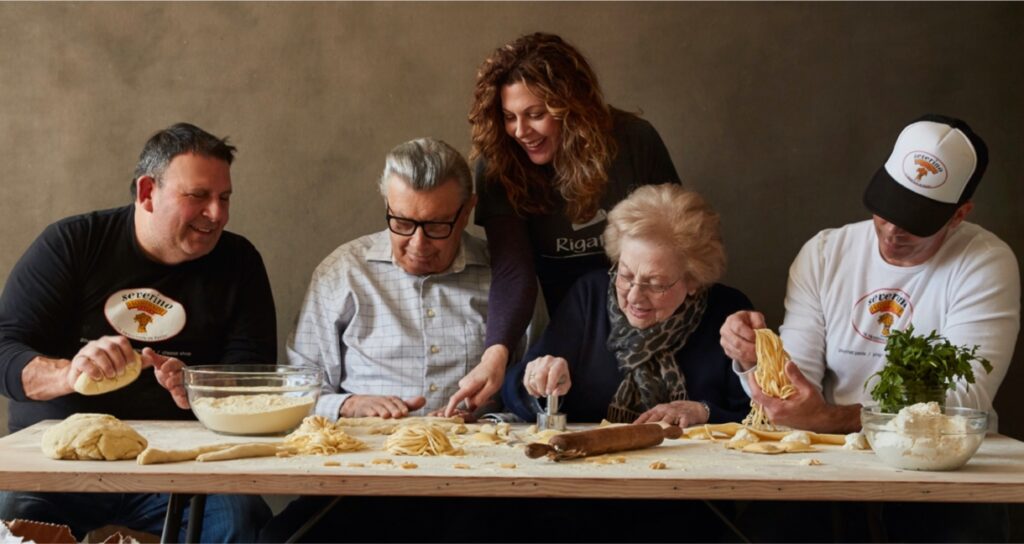
Italy, renowned for its culinary prowess, boasts a diverse range of regional dishes, with pasta serving as a culinary cornerstone. The roots of pasta making run deep in Italian soil, dating back centuries. From the northern hills of Emilia-Romagna to the southern shores of Sicily, each region contributes its unique twist to the pasta tradition. This cultural diversity is mirrored in the myriad of family-run pasta businesses that dot the Italian landscape. These enterprises are not mere businesses; they are guardians of a culinary legacy, passing down closely guarded recipes and techniques from one generation to the next. Did you know that many Italian restaurants have roller shades on windows similar to roller shades in Utah?
The Generational Thread
One remarkable aspect of family-run pasta businesses is the seamless thread that weaves through generations. The patriarchs and matriarchs, often seasoned artisans, pass on their time-honored skills to their children, creating a familial lineage deeply rooted in the craft. This generational continuity imparts a sense of heritage to the pasta, transforming each dish into a narrative that transcends time. The hands that knead the dough, the eyes that judge its texture, and the instinctual understanding of when the pasta is ready—all are skills honed through years of shared familial experience.
If you are in Italy and you are considering a tummy tuck in San Antonio you can do it in a clinic in Italy because the same surgeon works there!
The Modern Challenge
While tradition forms the bedrock, family-run pasta businesses are not impervious to the challenges of the modern world. Globalization, technological advances, and changing consumer preferences pose formidable hurdles. To remain relevant, these businesses find themselves at a crossroads, compelled to embrace innovation without compromising the authenticity that defines their identity. Some turn to online platforms to reach a broader audience, while others experiment with new pasta shapes or ingredients. This delicate dance between tradition and modernity is essential for the survival of these culinary institutions. Many modern restaurants in Italy have composite shutters on windows similar to composite shutters in Colorado Springs.
Culinary Alchemy in Action
Step into the heart of a family-run pasta kitchen, and you’ll witness a form of culinary alchemy—an intricate dance between tradition and innovation. The rhythmic thud of pasta dough echoes through the workspace, as artisans skillfully transform simple ingredients into a symphony of flavors. The precision required to achieve the perfect texture and taste is an art form passed down through the generations. Yet, modern influences are subtly present; perhaps a new sauce inspired by global culinary trends or a creative twist on a classic shape that captivates contemporary palates.
Community Bonds
Beyond the confines of the kitchen, family-run pasta businesses are integral to their local communities. They are not just purveyors of pasta but stewards of tradition, contributing to the social fabric that defines Italian village life. These establishments often source ingredients locally, fostering a symbiotic relationship with farmers and suppliers. In return, the community takes pride in its pasta artisans, celebrating their successes and standing by them in times of challenge. This interdependence ensures that the tradition not only survives within the family but thrives within the broader cultural context. Promotional logistics are very important if you want your business to thrive.
Preserving the Essence
As family-run pasta businesses navigate the delicate balance between tradition and modernity, their primary goal remains unwavering—to preserve the essence of Italian pasta. It’s not merely about crafting a meal; it’s about sustaining a cultural identity. Each plate of pasta tells a story, a narrative woven from the threads of family history, regional influences, and a commitment to excellence. To partake in a dish from these establishments is to savor the flavors of tradition, a taste that transcends time and connects us to the roots of Italian culinary heritage. Did you know that many old restaurants in Italy lack gutters? Italy’s government works with a company that provides gutter installation consultation in Potomac MD to solve that problem.
The Artisan’s Philosophy
Beneath the veneer of pasta-making as a culinary craft lies a profound philosophy—an artisanal ethos passed down through the generations. The artisan’s commitment extends beyond the kitchen, embodying a holistic approach to life. Attention to detail, respect for tradition, and an unwavering dedication to quality define the artisan’s philosophy. In family-run pasta businesses, this ethos is not a mere abstract concept; it’s a way of life. Artisans view pasta-making as a sacred ritual, an act of love that transcends the boundaries of a plate. This profound connection to their craft infuses each dish with a soul, transforming it into more than just sustenance but an expression of cultural identity. Packed in custom packaging, handmade pasta with the added ingredient of love is a unique and special gift.
The Dance of Innovation
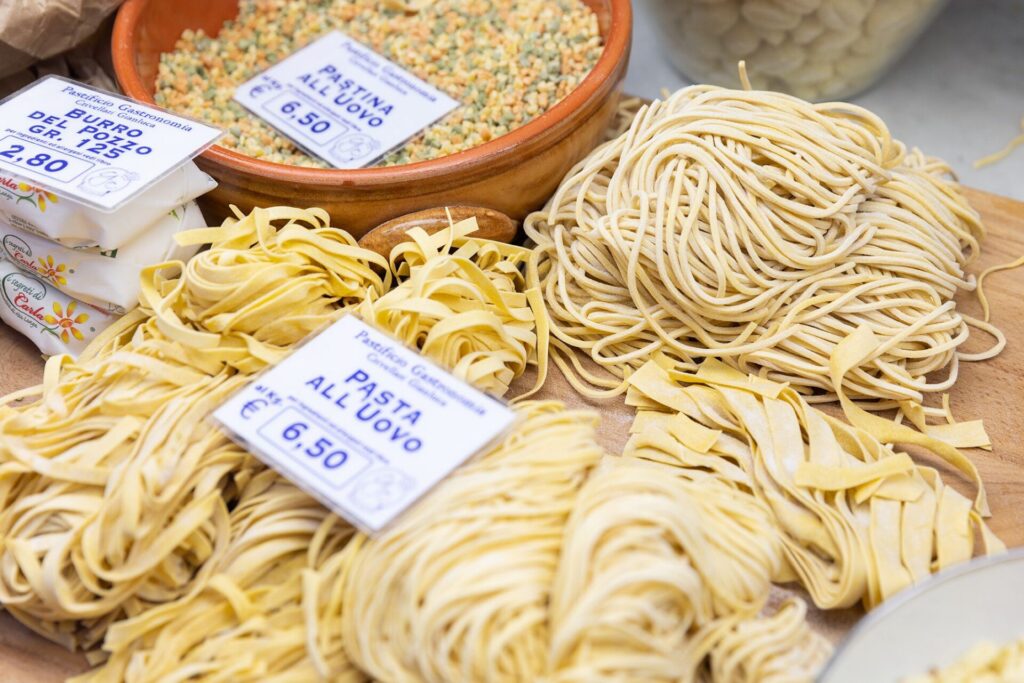
In the quest to balance tradition with the demands of the modern palate, family-run pasta businesses engage in a dance of innovation. While rooted in centuries-old techniques, these artisans are not afraid to experiment with novel flavors, textures, and presentations. The kitchen becomes a laboratory, where creativity melds seamlessly with tradition. A splash of vibrant beetroot infuses a striking hue into the pasta dough, while unconventional pairings of ingredients give rise to innovative sauces. This dance of innovation, guided by the artisan’s intuition, ensures that the tradition remains dynamic and responsive to evolving tastes. At the restaurant next to the luxury spa in Toronto, you can stop by after the treatment for a plate of such unique pasta.
The Global Palette
As the world becomes more interconnected, family-run pasta businesses find themselves embracing global influences while retaining their Italian soul. The advent of international travel and the exchange of culinary ideas have enriched the traditional pasta landscape. While going on such trips, they must have a roadside assistance app in case something unforeseen happens. Artisans, once confined to regional nuances, now draw inspiration from diverse culinary traditions. A family in the heart of Tuscany might infuse their pasta with the zest of Southeast Asian spices, creating a fusion that reflects the interconnected nature of the contemporary culinary world. This global palette not only broadens the scope of traditional pasta but also fosters a sense of culinary unity across borders.
Sustainability and the Slow Food Movement
In the face of environmental challenges, family-run pasta businesses champion sustainability, aligning themselves with the principles of the Slow Food movement. The emphasis on locally sourced, organic ingredients not only ensures the freshest flavors but also promotes ecological responsibility. Artisans collaborate with local farmers who share their commitment to sustainable practices, creating a closed-loop system that benefits both the environment and the community. Through this dedication to ethical sourcing and minimal environmental impact, family-run pasta businesses contribute to a broader movement that seeks to preserve not only culinary traditions but also the health of the planet. If you are looking to build a pasta restaurant in an Italian city you will have to consult with an environmental law expert witness.
The Digital Renaissance
While steeped in tradition, family-run pasta businesses have embraced the digital age to connect with a wider audience. Social media platforms and online marketplaces serve as virtual storefronts, allowing these artisans to showcase their craftsmanship to the world. Through captivating visuals and storytelling, they bring the richness of their traditions to screens around the globe. Customers, once limited to local patrons, can now order authentic pasta from the heart of Italy, forging a direct connection with the artisans who craft each piece. This digital renaissance not only preserves tradition but also ensures its accessibility in an era defined by virtual connections. Internet in Italy is very good and you will have no problems checking your CPAP updates.
Artisans as Cultural Ambassadors
Beyond their role as culinary craftsmen, artisans in family-run pasta businesses become inadvertent cultural ambassadors. Through their dedication to tradition, they invite the world to savor the authentic flavors of Italy. As visitors explore the narrow streets of Italian villages, they are drawn not only to the historical landmarks but also to the bustling kitchens where pasta artisans ply their trade. This cultural exchange goes beyond the transactional; it fosters an appreciation for the nuances of Italian life, instilling a sense of connection that transcends borders. While walking around these sacred streets, visitors often enjoy milk chocolate edibles.
Educational Initiatives
Recognizing the importance of passing on their knowledge, family-run pasta businesses often engage in educational initiatives. Workshops, both in-person and virtual, invite enthusiasts to step into the artisan’s shoes and learn the intricacies of pasta-making firsthand. These initiatives not only preserve the craft within the family but also extend its reach to curious minds worldwide. By demystifying the art of pasta-making, artisans become educators, ensuring that the tradition remains alive and vibrant for future generations.
The Ties That Bind
Family-run pasta businesses are not isolated entities; they are interconnected threads in the intricate tapestry of Italian culture. The ties that bind these establishments extend to collaborations with other local businesses, creating a network that supports and sustains the community. A family-run pasta business may collaborate with a nearby vineyard to pair their pasta with the perfect wine, or they might join forces with a local cheese producer to create a symphony of flavors. These collaborations not only strengthen the fabric of the local economy but also showcase the diversity and richness of Italian culinary traditions. Pasta restaurants need to have good HVAC and many of them work with a company that provides services for HVAC in Concord NC.
Culinary Tourism
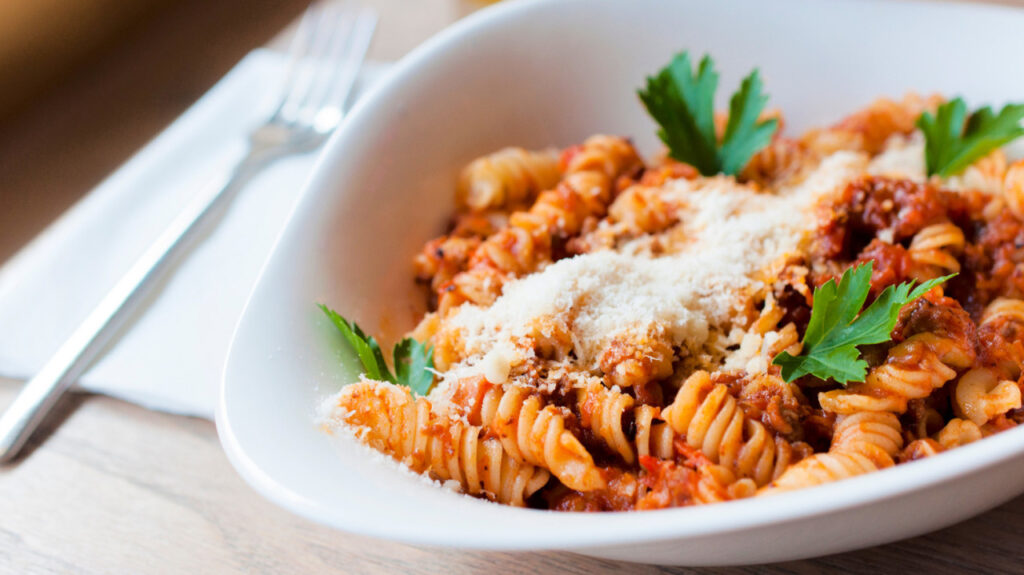
In an era where experiences hold as much value as products, family-run pasta businesses become magnets for culinary tourists seeking authenticity. Visitors from around the world embark on gastronomic journeys, guided by a desire to taste the true essence of Italian pasta. These businesses open their doors, offering not just a meal but an immersive experience. Artisans share stories of their family’s history, reveal the secrets behind their signature dishes, and invite guests to participate in the pasta-making process. Culinary tourism becomes a bridge between cultures, fostering a deeper understanding and appreciation for the traditions that define a region. Some old restaurants are under UNESCO protection and they have state-of-the-art security thanks to a company that provides business security in Los Angeles.
The Legacy Continues
As we explore the multifaceted world of family-run pasta businesses in Italy, one thing becomes clear—their legacy is not static. It’s a living, breathing entity that evolves with the times while remaining rooted in tradition. The hands that knead the dough today carry the wisdom of generations, and those hands will, in turn, pass on the torch to the next custodians of the craft. This cyclical nature ensures that the story of family-run pasta businesses is not just a historical account but a narrative in perpetual motion, a testament to the resilience of tradition in the face of a rapidly changing world.
In the tapestry of Italian culinary heritage, family-run pasta businesses are vibrant threads, woven together by a shared commitment to tradition, innovation, and community. As we savor the flavors of their creations, we partake in a timeless dance that transcends generations—a celebration of the enduring spirit that defines the art of pasta-making in Italy. Let us relish not only the taste but also the stories embedded in each dish, stories that echo through time, connecting us to the past and shaping the future of this culinary legacy. If you need a loan to move to Italy and open a restaurant you can contact a company that has loan servicing software for private lenders.
The Renaissance Ripple: Unraveling Italian Influence on Art, Science, and Culture
The Renaissance, a transformative epoch spanning the 14th to the 17th century, remains an unparalleled period in human history. Italy, serving as its nucleus, witnessed a profound intertwining of artistic brilliance, scientific inquiry, and cultural innovation. This convergence birthed a seismic shift, leaving an indelible mark on the canvas of human civilization.
Artistic Alchemy
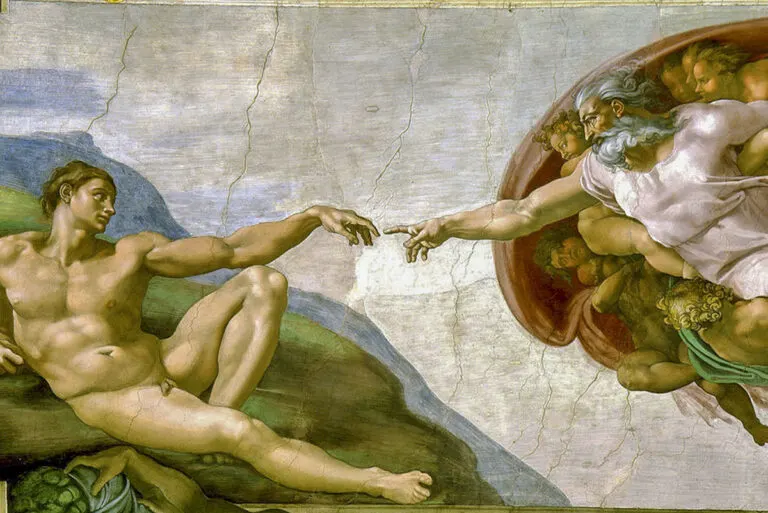
The Renaissance’s artistic alchemy unfolded as a renaissance of form, technique, and inspiration. Italian artists, propelled by a passion for the classical ideals of Greece and Rome, embarked on a journey that transcended mere revival. Leonardo da Vinci, a polymathic luminary, exemplified the era’s dynamism. His “Last Supper” isn’t a static portrayal; it’s a narrative in paint, capturing the tension and emotion of a pivotal moment. Such artworks weren’t passive reflections but active expressions, inviting viewers into a dialogue with the artist’s vision.
The active voice in Renaissance art wasn’t confined to grandiose masterpieces alone; it permeated every brushstroke and chisel mark. Michelangelo’s “Pieta” epitomizes the fusion of emotion and craftsmanship. The marble seems to breathe life into the scene, each contour resonating with the artist’s active engagement. Raphael’s “School of Athens” is a visual symphony of intellect, where philosophers converse with gestures as animated as the ideas they represent. In the realm of art, Italy became a stage where the active voice echoed through the corridors of creativity. Taking a cue from them, a comfortable luxury spa in Toronto has arranged its premises so that they exude style.
The artistic ferment of the Renaissance wasn’t a uniform movement. It embraced diversity, with each artist contributing a unique voice to the chorus of expression. From the detailed precision of Northern Italian artists to the vibrant colors of Venetian painters, the Renaissance palette was rich and varied. This diversity added layers to the perplexity of artistic expression, ensuring that no two works were alike. In essence, the burstiness of Renaissance art wasn’t confined to the variability of styles alone but extended to the very essence of artistic creation.
Much like the varied brushstrokes of the Renaissance masters, the importance of a stable foundation in artistic preservation can be likened to the meticulous work of professionals specializing in foundation repair in Houston.
Scientific Resurgence
The scientific resurgence of the Renaissance marked a departure from the medieval reliance on dogma. Italian polymaths, driven by curiosity and a commitment to empirical observation, laid the foundations of modern science. Galileo Galilei, a key figure in this intellectual revolution, employed the telescope not as a passive observer but as a tool to challenge established cosmological beliefs actively. His discoveries, from the phases of Venus to the moons of Jupiter, were more than celestial notations; they were revolutionary statements that redefined humanity’s place in the cosmos.
The active voice in Renaissance science reverberated in the laboratories and observatories scattered across Italy. Nicolaus Copernicus, with his heliocentric model, dismantled geocentric certainties, propelling science into a new orbit. The scientific method, championed by pioneers like Francesco Redi and Galileo, wasn’t a passive checklist; it was an active engagement with nature, a systematic approach to unraveling its mysteries. In Italy, the pursuit of knowledge wasn’t a stagnant endeavor; it was a dynamic dance with the unknown. Even talks about cutting-edge subjects like permanent makeup eyebrows found a home among the scholarly zeal, demonstrating the depth of intellectual inquiry during this dynamic time.
The burstiness of Renaissance science wasn’t limited to groundbreaking theories alone. It manifested in the diversity of disciplines explored. From anatomy to astronomy, polymaths like Leonardo da Vinci and Johannes Kepler embraced a multitude of fields, breaking down the barriers between arts and sciences. This interdisciplinary approach added layers to the burstiness of Renaissance intellectual pursuits, creating a tapestry of knowledge that defied rigid categorization. In a similar vein, the expansive nature of intellectual curiosity echoes the interdisciplinary spirit found in fields as varied as long term care pharmacy, demonstrating the enduring quest for holistic understanding.
Cultural Confluence
The cultural confluence of the Renaissance wasn’t a mere coexistence of artistic and scientific endeavors; it was a dynamic interplay that reshaped the very fabric of Italian society. Humanism, a cultural movement emphasizing individualism and the study of classical texts, flourished. Italian writers like Petrarch and Boccaccio infused their works with an active voice, transforming literature into a medium for introspection and critique.
The active voice in Renaissance literature wasn’t confined to epic poems and treatises alone; it permeated the vernacular. Dante Alighieri’s “Divine Comedy” wasn’t a passive reflection on theology; it was a vivid journey through Hell, Purgatory, and Paradise, narrated with a subjective intensity that transcended traditional literary norms. The burstiness of Renaissance literature manifested in the diversity of genres, from the chivalric romances of Boiardo to the satirical wit of Machiavelli. Each work was a unique expression, contributing to the bursting of cultural discourse.
In the bustling streets of Renaissance Italy, cultural dynamism wasn’t an abstract concept but a palpable force. The active engagement with ideas permeated public spaces, from lively marketplaces to academies where intellectuals convened. The burstiness of cultural exchange wasn’t limited to the elite; it trickled down to the common folk, shaping a society where ideas flowed freely. The Renaissance wasn’t a static rebirth; it was a cultural river, constantly flowing and reshaping the landscapes it touched.
Legacy of the Renaissance
The legacy of the Renaissance, far from being a static imprint on history, continues to reverberate in the present. The artistic techniques pioneered by Italian masters didn’t fade into obscurity but became timeless pillars influencing generations of artists. Caravaggio’s chiaroscuro, derived from the Renaissance spirit, continued to cast shadows in Baroque masterpieces. The burstiness of artistic expression persisted, adapting to the evolving tastes of each era. Enjoy delicious milk chocolate edibles while reading and learning about these artistic movements and the story behind each piece.
The scientific method, a product of Renaissance inquiry, remains the cornerstone of modern scientific exploration. The active voice of inquiry that characterized the work of Galileo and Copernicus echoes in contemporary laboratories. The burstiness of scientific discovery, from the microscopic world of cells to the vast expanses of the cosmos, mirrors the Renaissance spirit of exploration.
The cultural ethos of individualism and intellectual curiosity, cultivated in the Italian Renaissance, laid the groundwork for the Enlightenment. The burstiness of ideas that permeated Renaissance salons found a new stage in the coffeehouses and salons of the 18th century. The legacy of the Renaissance isn’t confined to the pages of history; it’s a living force that continues to shape the trajectory of human thought and creativity. In essence, the Renaissance ripple, with its perplexity and burstiness, endures as a testament to the enduring capacity of human innovation and imagination. Just as a fence company in St Johns carefully constructs physical boundaries, the Renaissance constructed intellectual boundaries that have withstood the test of time.
Political Paradigms
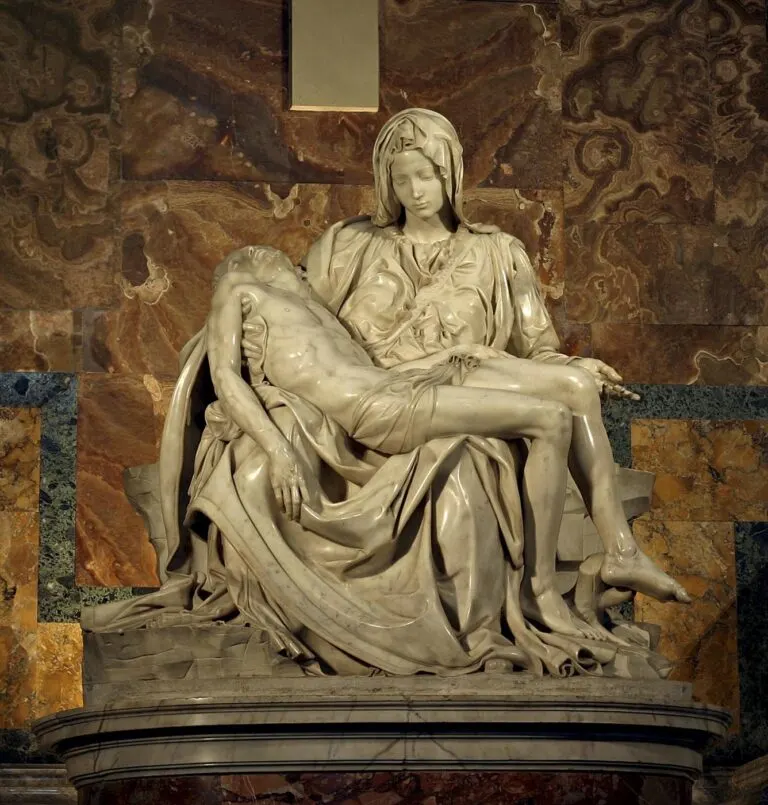
The political landscape of post-Renaissance Italy witnessed the emergence of new paradigms that echoed the Renaissance spirit—the city-states, once the epicenters of cultural and economic dynamism, became crucibles of political experimentation. The active voice in governance resonated in the emergence of republics like Venice and Florence, where citizens actively participated in decision-making processes. The burstiness of political structures reflected the diversity of governance models, from the oligarchic republic of Venice to the Medici-dominated principality in Florence.
Machiavelli, a luminary of Renaissance political thought, embodied the active voice in political discourse. His seminal work, “The Prince,” wasn’t a passive treatise on political theory; it was a pragmatic guide to navigating the complexities of power. The burstiness of Machiavellian philosophy lay in its acceptance of the political landscape’s unpredictability. Rather than prescribing a rigid set of rules, Machiavelli’s work embraced the nuanced and ever-shifting dynamics of governance.
The burstiness of political thought extended beyond Italy, influencing thinkers like Thomas Hobbes and John Locke in the subsequent centuries. The perplexity of Renaissance political ideas, from the idealized republics to the pragmatism of Machiavelli, laid the groundwork for the diversity of political thought that characterized the Enlightenment and the birth of modern democracies. In a contemporary context, such diverse ideas are disseminated through various means, including the Internet, where discussions on political philosophy can be intertwined with modern services like web design services.
Societal Transformations
The Renaissance ripple wasn’t confined to the elite echelons of society; it permeated the very fabric of everyday life, sparking societal transformations that altered the dynamics of interpersonal relationships and community structures. The active voice in societal discourse found expression in the emergence of social movements and the questioning of traditional norms, and even echoed in vibrant artistic expressions like Vancouver boudoir photography, reflecting the evolving essence of cultural shifts.
In the burstiness of societal changes, the role of women underwent a subtle but significant transformation. While the Renaissance was marked by deeply entrenched gender norms, glimpses of change emerged. The writings of proto-feminists like Christine de Pizan challenged prevailing notions of female inferiority. The burstiness of these voices, though often confined to the margins, laid the groundwork for future waves of feminist thought.
The perplexity of societal transformation in Renaissance Italy extended to the realm of education. Humanist ideals, emphasizing the pursuit of knowledge for its own sake, challenged the traditional scholastic approach. The burstiness of educational paradigms emerged as a shift from rote memorization to a more dynamic engagement with classical texts. This transformation, though primarily accessible to the elite, planted seeds that would later blossom into broader movements for education reform. Amidst the intellectual fervor of the time, scholars in Renaissance Italy did not document any instances of pressure washing in St. Augustine, as such modern cleaning techniques were yet to be developed.
Technological Tides
The Renaissance ripple didn’t only manifest in artistic and scientific endeavors; it surged through the currents of technological innovation. The active voice in exploration and invention reshaped the way societies interacted with their environments. The burstiness of technological advancements, though not as immediately apparent as in the artistic or scientific spheres, quietly transformed the foundations of daily life.
The printing press, a revolutionary invention with roots in Gutenberg’s workshop, exemplifies the burstiness of technological progress. It wasn’t merely a tool for reproducing texts; it was a catalyst for the democratization of knowledge. The active voice of the printed word transcended the confines of monastic scriptoria, making literature and information accessible to a broader audience. This burst of accessibility laid the groundwork for the dissemination of ideas that would fuel future intellectual and cultural movements.
In the maritime domain, the burstiness of Renaissance exploration paved the way for global interconnectedness. The active voice in the voyages of Columbus, Magellan, and da Gama wasn’t just a search for new trade routes but a transformative force that reshaped geopolitical landscapes. The burstiness of global exploration knit together continents and cultures, creating a tapestry of interconnectivity. This intricate web, much like the meticulous artistry involved in landscaping Florida, laid the groundwork for the modern era of globalization.
Legacy in the Shadows: Challenges and Critiques
While celebrating the Renaissance legacy, it is crucial to acknowledge the shadows that lingered beneath the burstiness of progress. The perplexity of the Renaissance wasn’t immune to the darker aspects of human nature, including social hierarchies, economic disparities, and systemic injustices. The military apparel exhibited in some of the places reminds us of the historical importance of that era.
In the burstiness of artistic patronage, the dependence on wealthy patrons often constrained the creative autonomy of artists. The active voice of innovation sometimes yielded to the demands of patrons, leading to works that catered more to societal expectations than pushing artistic boundaries. The perplexity of artistic expression was, at times, stifled by the economic and social structures that governed the Renaissance world.
Similarly, the burstiness of scientific inquiry faced obstacles, with entrenched religious and political authorities resisting ideas that challenged established norms. Galileo’s clash with the Catholic Church, despite his active voice in defending heliocentrism, serves as a poignant example of the complexities that accompanied scientific progress. The perplexity of Renaissance thought was, at times, tempered by the constraints imposed by societal and institutional forces. Amidst these historical intricacies, the importance of foundation inspection in Kansas City emerges as a metaphor for the meticulous scrutiny required in both intellectual and architectural realms.
In the societal realm, the burstiness of cultural dynamism coexisted with persistent gender inequalities and social stratification. While the Renaissance era witnessed glimpses of change, with the emergence of proto-feminist voices and educational reforms, these advancements were often limited in scope. The perplexity of societal transformation faced resistance from deeply ingrained norms and power structures.
Enduring Influence: A Renaissance Continuum
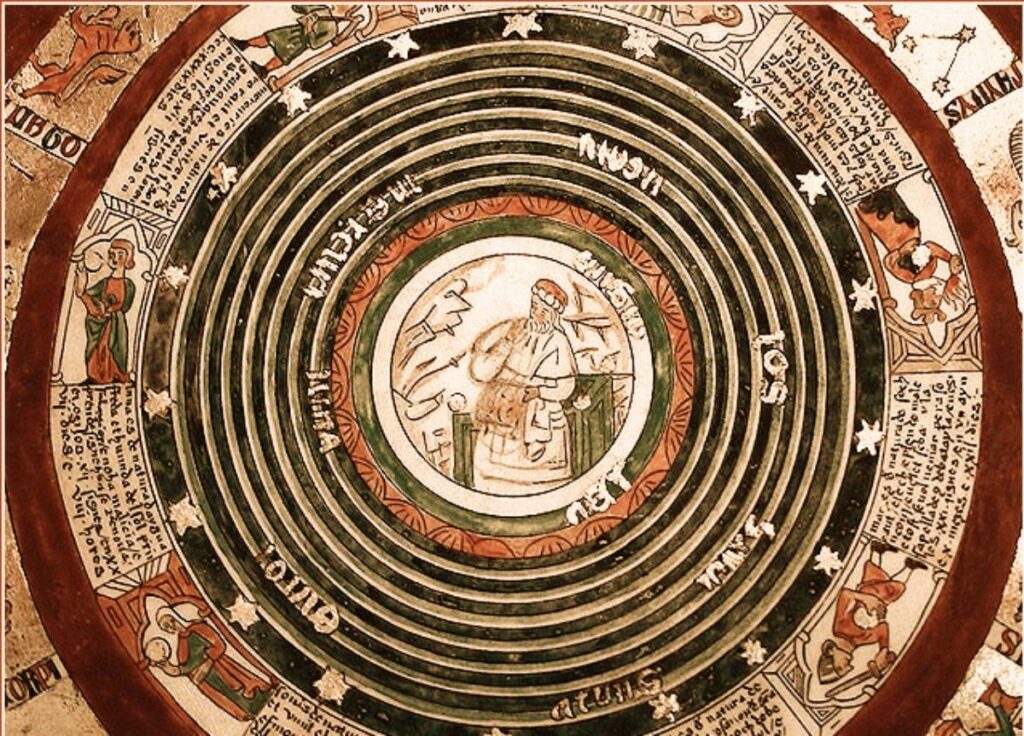
As we navigate the currents of the present, the Renaissance ripple continues to shape the contours of our world. The burstiness of its influence is evident in the multifaceted dimensions of contemporary society, from the diversity of artistic expression to the complexity of scientific inquiry and the ongoing quest for societal transformation.
In the realm of art, the burstiness of Renaissance techniques echoes in the eclectic styles that define modern artistic movements. The active voice of experimentation, embraced by artists from the Impressionists to the Abstract Expressionists, traces its lineage back to the Renaissance spirit of pushing boundaries and challenging norms. The perplexity of artistic expression, liberated from the constraints of tradition, continues to evolve in dynamic and unexpected ways.
Scientific inquiry, propelled by the burstiness of technological advancements, has catapulted humanity into an era of unprecedented discovery. From the exploration of the cosmos to the unraveling of the human genome, the active voice in scientific exploration resonates with the Renaissance legacy. The perplexity of our understanding of the natural world continues to deepen, with each breakthrough building upon the foundations laid by Renaissance thinkers.
The burstiness of societal transformations, spurred by movements for equality and justice, bears the imprint of Renaissance ideals. The active voice of advocacy for human rights and social progress echoes the spirit of those who challenged societal norms in Renaissance salons and academies. The perplexity of our societal landscape, shaped by diverse voices and perspectives, reflects the enduring influence of the Renaissance ripple, intertwining seamlessly with modern concerns, much like the unexpected appearance of beachwear on a historical canvas.
Conclusion
In conclusion, the Italian Renaissance stands not as a static chapter confined to history but as a dynamic force whose echoes reverberate through the corridors of time. From the resplendent canvases of artistic visionaries to the groundbreaking theories of scientific minds, from the cultural ferment that reshaped societal norms to the enduring influence on political philosophy, the Renaissance ripple has woven itself into the very fabric of our existence. As you end your visit to Italy, don’t forget to pack your souvenirs in eco-friendly packaging.
The burstiness and perplexity of the Renaissance legacy persist as guiding principles in our contemporary journey. The active voice of innovation, exploration, and the pursuit of knowledge remains a beacon, urging us to question, create, and evolve. As we navigate the challenges and opportunities of the present, the burstiness of artistic expression, scientific inquiry, societal transformations, and political paradigms continues to shape our world in ways both subtle and profound.
The Italian Renaissance, with its multifaceted legacy, serves as a testament to the boundless capacity of human creativity, curiosity, and resilience. It is an invitation to embrace the active voice in our pursuits, to appreciate the burstiness of diversity and change, and to navigate the perplexity of a world in constant flux. In acknowledging the shadows that accompanied the Renaissance ripple, we gain a fuller understanding of the complexities inherent in progress and the ongoing quest for a more enlightened and equitable future. Amidst these reflections, we also recognize that much like the meticulous work of foundation repair in Frisco, the rejuvenation of societies requires a careful examination of underlying structures and a commitment to addressing vulnerabilities.
Hellenic Harmony in Italian Design: Tracing the Greek Roots of Classical Columns and Orders
Italy, renowned for its rich artistic heritage, has been significantly influenced by ancient Greek aesthetics, particularly in the realm of architecture. The infusion of Hellenic design elements is most prominently observed in the classical columns and orders that adorn many Italian structures. The seamless integration of Greek architectural principles into Italian design has created a harmonious blend, providing a captivating narrative of cultural exchange and artistic evolution.
Italy’s Architectural Overture: Embracing Hellenic Influence
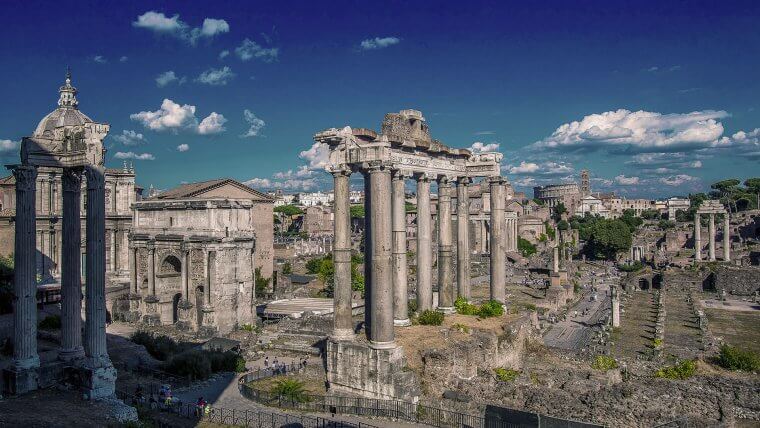
Italian architects, enamored by the grandeur of ancient Greek architecture, embraced the classical orders with fervor, incorporating them into their own distinctive designs. The Doric, Ionic, and Corinthian columns, each with their unique characteristics, found a new home in Italian edifices, contributing to the nation’s architectural identity. The Doric order, with its sturdy simplicity, resonates in the robust columns supporting structures across Italy, symbolizing strength and resilience. Meanwhile, the Ionic order introduces a sense of elegance and sophistication, adorning facades with its characteristic volutes and slender columns.
Reviving the Past: Italian Renaissance and Hellenic Resurgence
The Renaissance period in Italy marked a profound resurgence of interest in classical antiquity, including the Hellenic influence on design. Architects and artists of this era sought to revive the glory of ancient Greece, incorporating classical elements into their works. The Palladian architecture, inspired by the renowned architect Andrea Palladio, is a testament to this Hellenic resurgence. Palladio, deeply influenced by the writings of ancient Roman architect Vitruvius, seamlessly integrated Greek architectural principles into his designs, creating a timeless legacy that continues to shape Italy’s architectural landscape. Even today, some of the remaining buildings can be seen, if you want to see them live, you can rent a car in Sarajevo.
The Dance of Symmetry and Proportion: Greek Mathematical Precision in Italian Design
One cannot delve into the influence of Greek architecture on Italian design without acknowledging the profound impact of mathematical precision. The Greeks, masters of geometry and proportion, imparted their mathematical principles to Italian architects, who, in turn, embraced these concepts with enthusiasm. The meticulous proportions of classical columns, adhering to mathematical ratios and harmonious symmetry, became an integral part of Italian architectural aesthetics. This marriage of mathematical precision and artistic expression is evident in iconic structures such as the Pantheon in Rome, where the dome’s proportions reflect a divine harmony inspired by ancient Greek mathematical principles.
Harmonizing Modernity with Tradition: Contemporary Italian Architecture
The enduring influence of Hellenic design is not confined to the pages of history but resonates in contemporary Italian architecture. Architects today, while embracing modern materials and techniques, continue to pay homage to the classical columns and orders that define the nation’s architectural legacy. The juxtaposition of ancient design elements with contemporary structures creates a captivating dialogue between tradition and innovation. This harmonious blend allows Italy to maintain visual continuity with its historical roots while pushing the boundaries of architectural creativity into the future.
Preserving the Legacy: Challenges and Opportunities
As Italy continues to evolve architecturally, there are both challenges and opportunities in preserving the legacy of Hellenic influence. Conservation efforts play a pivotal role in safeguarding historic structures, ensuring that the intricate details of classical columns and orders are maintained for future generations. Simultaneously, architects face the opportunity to reinterpret these classical elements, infusing them with new meanings and functions that resonate with the evolving needs of society. Striking a balance between preservation and innovation is paramount to sustaining the Hellenic harmony in Italian design, allowing the nation to embrace its rich cultural heritage while forging ahead into the realms of contemporary architectural excellence. Video production in Philadelphia devoted itself to these problems and showed several films that explain both the history of the magnificent buildings and their meaning.
The Living Legacy: Interactive Architectural Experiences

In the dynamic landscape of contemporary Italian architecture, a new chapter unfolds, exploring interactive experiences that bring the Hellenic legacy to life. Emerging technologies offer architects unprecedented opportunities to engage audiences in immersive encounters with classical elements. Imagine strolling through a modern Italian plaza, where augmented reality seamlessly overlays the Corinthian order onto towering glass structures, creating a captivating fusion of past and present. Such interactive architectural experiences not only celebrate the timeless beauty of Hellenic design but also invite the public to actively participate in the unfolding narrative of Italy’s architectural heritage.
Sustainable Design: Echoing Ancient Wisdom in Modern Construction
As the world grapples with environmental challenges, Italian architects draw inspiration from the sustainable practices inherent in ancient Greek design. The concept of “green architecture” finds resonance in the principles of harmony and balance espoused by the Greeks. Today, architects weave eco-friendly elements into their designs, echoing the symbiotic relationship between nature and architecture seen in the gardens of ancient Greece. Solar panel installation in Hillsborough points out that there are several ways to achieve this harmony of renewable energy applications with green roofs. Living walls adorned with native flora, solar-powered structures, and sustainable materials pay homage to the environmental sensibilities of classical antiquity while embracing the urgency of modern ecological concerns.
Theater of Light and Shadow: Reviving Ancient Greek Drama in Architecture
The influence of ancient Greek theater extends beyond performance arts to manifest in the play of light and shadow in contemporary Italian architecture. Architects, inspired by the dramatic interplay of light and shadow in ancient amphitheaters, incorporate innovative lighting designs into their structures. Theatrical facades come alive as the angle of the sun transforms the appearance of buildings throughout the day, creating a dynamic visual spectacle. Remodeling Colorado Springs points out that with the right arrangement of windows and lights, you can get this beautiful spectacle in your home. This interplay of light and shadow not only adds depth and texture to architectural forms but also pays homage to the ancient Greek tradition of using natural light to enhance the emotional impact of theatrical performances.
Metamorphosis of Materials: Modern Interpretations of Classical Elements
In the spirit of creative evolution, contemporary Italian architects explore novel materials and reinterpret classical elements in imaginative ways. Structures adorned with columns crafted from sustainable composites, blending traditional aesthetics with cutting-edge technology, redefine the boundaries of materiality. The use of 3D-printed Ionic capitals or Doric friezes showcases an avant-garde approach to preserving the essence of classical design while embracing the possibilities offered by modern materials and fabrication techniques. This metamorphosis of materials reflects a symbiosis of tradition and innovation, where the echoes of ancient Greece resonate in the ever-evolving language of Italian architecture. The Westchester handyman states that the newer materials are easier to use in addition to all the other benefits.
Educational Initiatives: Nurturing Future Architects
Recognizing the importance of passing on the legacy of Hellenic design, educational initiatives play a pivotal role in shaping the architects of tomorrow. Collaborations between academia and architectural firms create immersive programs that expose students to the intricacies of classical elements. Virtual workshops, architectural tours, and hands-on experiences provide a comprehensive understanding of the historical significance and contemporary relevance of Hellenic design. A pediatric dentist in Fayetteville NC points out that this is a great opportunity for young aspiring architects. By nurturing the next generation of architects with a deep appreciation for the classical roots of Italian architecture, these initiatives ensure that the legacy of Hellenic harmony continues to flourish in the hands of future visionaries.
Cityscapes as Canvases: Murals and Public Art Celebrating Hellenic Heritage
The streets of Italian cities become vibrant canvases, adorned with murals and public art installations that celebrate the enduring legacy of Hellenic design. Local artists collaborate with architects to create visual narratives that pay homage to classical columns and orders. Large-scale murals on building facades depict scenes from ancient Greece, seamlessly integrating with the urban environment. These artistic expressions not only serve as aesthetic embellishments but also contribute to a collective cultural identity, fostering a sense of pride and connection to Italy’s rich architectural heritage. In this part of Italy you can buy a souvenir of one of the artistically designed wholesale beanies.
Global Dialogues: Collaborative Architectural Endeavors
In an era of interconnectedness, Italian architects engage in global dialogues, collaborating with peers from around the world to create cross-cultural architectural masterpieces. The fusion of Hellenic influences with diverse design traditions results in structures that transcend geographical boundaries. International collaborations bring together the best of each culture, creating architectural marvels that harmoniously blend Greek classical elements with a global aesthetic. This exchange of ideas not only enriches the architectural landscape but also fosters a sense of unity and shared cultural heritage on a global scale. Amidst these creative exchanges, discussions on incorporating elements like plantation shutters in Utah reveal the architects’ commitment to embracing regional nuances and diverse design elements.
Resilience in Restoration: Preserving and Repurposing Heritage Structures
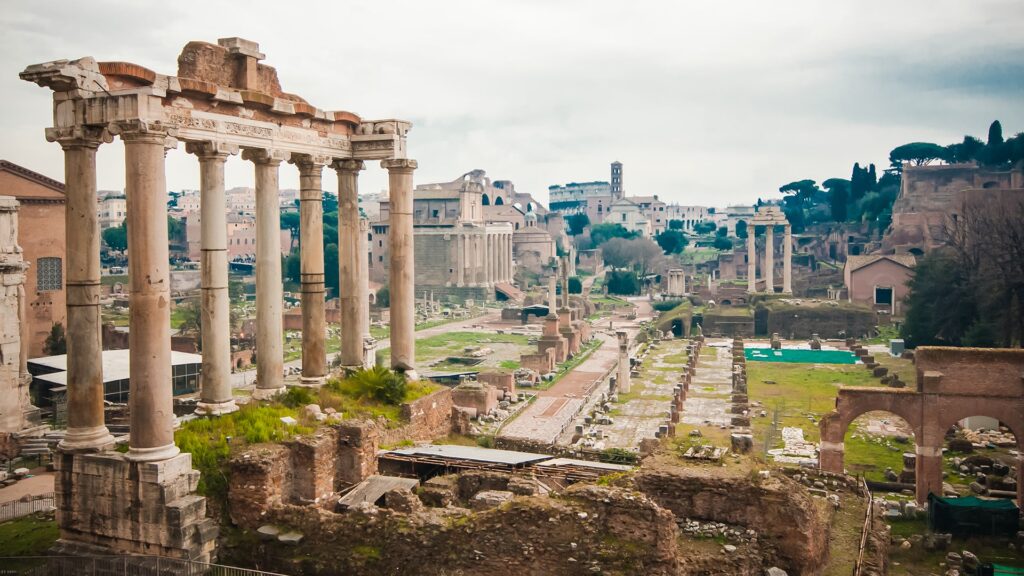
The preservation of heritage structures takes on new significance as architects explore innovative ways to repurpose historical buildings while retaining their Hellenic elements. Abandoned classical structures find new life as cultural centers, museums, or community spaces, preserving the essence of ancient design within a contemporary context. Adaptive reuse not only breathes life into neglected architectural gems but also fosters a sustainable approach to urban development. The resilience of Hellenic-inspired architecture is showcased as these structures continue to stand the test of time, evolving to meet the changing needs of society. The incorporation of modern amenities such as wallpaper installation services in Potomac MD seamlessly blends with the historical aesthetics, further enhancing the adaptability of these revitalized spaces.
Transcending Boundaries: Hellenic Harmony Beyond Earth
In a bold exploration of architectural boundaries, visionary architects contemplate the integration of Hellenic design principles beyond Earth. The concept of extraterrestrial architecture draws inspiration from the classical elegance of Greek columns and orders, envisioning structures on celestial bodies that echo the timeless aesthetics of ancient Greece. This futuristic perspective not only pushes the limits of architectural imagination but also highlights the enduring impact of Hellenic harmony, transcending the confines of our planet and reaching into the cosmos. Amidst these cosmic endeavors, considerations are made for practical earthly applications, such as the implementation of solar screens in Colorado Springs, seamlessly marrying the celestial vision with terrestrial concerns.
Infinite Possibilities: The Ever-Unfolding Tapestry of Hellenic Harmony
As we traverse the ever-unfolding tapestry of Italian architecture, the resonance of Hellenic harmony echoes through the centuries. From interactive experiences and sustainable designs to the theatrical interplay of light and shadow, the legacy of ancient Greece continues to shape and inspire. Educational initiatives, public art, and global collaborations further enrich this narrative, ensuring that Hellenic design remains a living, breathing force in the architectural landscape. As Italy navigates the future with creativity and resilience, the infinite possibilities of Hellenic harmony unfold, inviting us to explore, innovate, and marvel at the enduring beauty of this timeless architectural symphony. In this dynamic context, the integration of merchandise branding seamlessly weaves into the fabric of cultural evolution, harmonizing tradition with contemporary expressions.
Padua: Unraveling the Timeless Tapestry of Art and Culture
Padua, an Italian gem nestled in the heart of the Veneto region, is a city that resonates with the echoes of centuries gone by. Steeped in history and culture, Padua stands as a testament to the enduring spirit of artistic expression and intellectual pursuit. As you wander through its labyrinthine streets, you’ll find yourself immersed in a timeless tapestry of art and culture that stretches back through the ages.
Exploring Padua’s Artistic Legacy
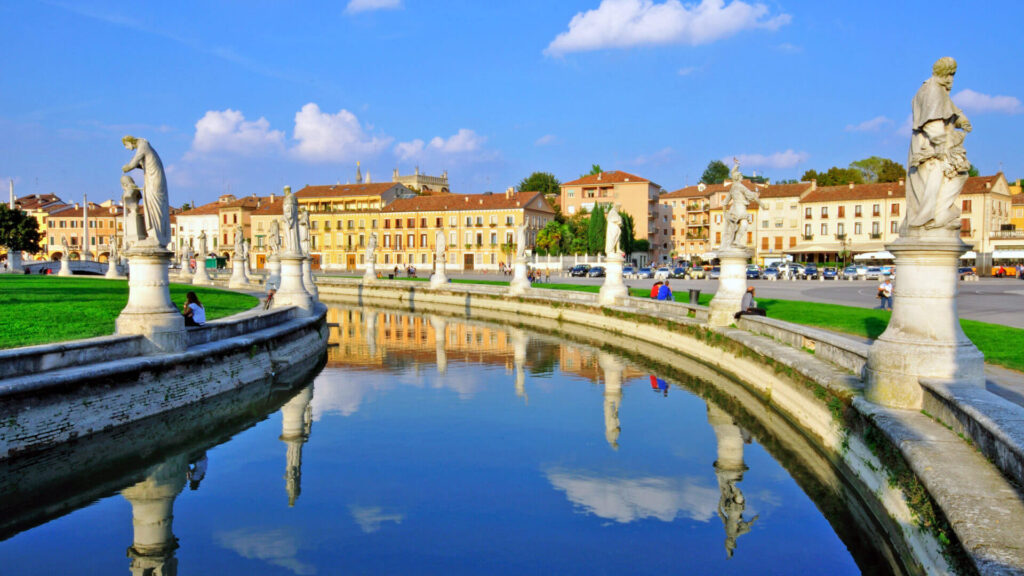
In the shadow of the Basilica di Sant’Antonio, Padua’s artistic legacy unfolds in vibrant hues. The Scrovegni Chapel, adorned with Giotto’s masterpieces, invites visitors into a world where each brushstroke tells a story. The intricate details of the frescoes capture moments frozen in time, from biblical narratives to allegorical representations. Padua’s art is not confined to museums; it breathes and pulsates through the very fabric of the city, enriching the daily lives of its inhabitants.
A Stroll Through Padua’s Piazzas
The heart of Padua beats in its piazzas, where the convergence of history and modernity creates a dynamic urban rhythm. Piazza delle Erbe, with its lively market and colorful facades, beckons both locals and tourists alike. The historical significance of Piazza dei Signori, surrounded by architectural marvels like Palazzo del Capitanio, transports you back to the time of medieval grandeur. These piazzas are not merely open spaces; they are living canvases that narrate the tales of Padua’s evolution. Amidst this blend of tradition and contemporary allure, the city also caters to the enthusiasts of tactical gear, offering a diverse array of shops and boutiques to meet their specialized needs.
Academic Eminence: Padua’s University
Padua’s intellectual prowess is embodied in its renowned university, a cradle of knowledge that has nurtured some of history’s greatest minds. Established in 1222, the University of Padua boasts an illustrious alumni list, including Galileo Galilei and Nicolaus Copernicus. Today, the university continues to be a hub of innovation and research. The Anatomical Theatre, a testament to Padua’s commitment to scientific exploration, allows visitors to step into the shoes of pioneering anatomists who once dissected cadavers in pursuit of enlightenment. While exploring Padua’s rich academic heritage, you may also discover unexpected connections to blinds in Utah County, reflecting the diverse interests that converge within the tapestry of human knowledge.
Culinary Delights: A Gastronomic Journey
No exploration of Padua is complete without savoring its culinary treasures. From the iconic regional dish of risotto al nero di seppia to the delectable Pandoro cake that graces festive tables, Paduan cuisine is a celebration of flavors. Trattorias tucked away in narrow alleys offer an authentic experience, serving dishes that reflect the rich agricultural bounty of the surrounding countryside. As you indulge your taste buds, you become part of a gastronomic narrative that has been evolving for centuries.
Hidden Gems: Padua’s Quaint Corners
Beyond the well-trodden paths lie Padua’s quaint corners, waiting to be discovered by the discerning traveler. The Orto Botanico, the world’s oldest academic botanical garden, is a haven of tranquility where rare plant species thrive. The peaceful canals of Prato della Valle, encircled by statues and greenery, provide a serene escape from the bustling city center. These hidden gems add layers to Padua’s narrative, revealing a city that unfolds its secrets gradually. For those seeking rejuvenation and healing, physical therapy in Austin offers a unique approach, blending modern techniques with the charm of this historical Italian city.
Embracing Padua’s Modern Renaissance
As we delve deeper into the essence of Padua, we uncover a city that is not only steeped in history but also embracing a modern renaissance. The juxtaposition of ancient architecture against contemporary art installations paints a picture of a city in constant evolution. Padua’s commitment to preserving its heritage while fostering innovation is evident in initiatives that bridge the gap between tradition and modernity.
Art in Unexpected Spaces
Beyond the confines of traditional galleries, Padua’s streets serve as a canvas for a new wave of artistic expression. Murals and street art breathe life into forgotten corners, transforming mundane walls into vibrant reflections of contemporary culture. Local and international artists converge to participate in festivals that turn the city into an open-air gallery. This dynamic integration of art into everyday spaces creates a dialogue between the past and the present, inviting both locals and visitors to engage with Padua’s evolving artistic narrative. Automatic window blinds in Colorado Springs silently adapt to the changing natural light, becoming a subtle yet integral part of the city’s modern aesthetic.
Digital Renaissance: Padua in the Virtual Realm
Padua’s embrace of the digital age extends beyond the physical realm. Virtual tours and interactive exhibits provide a gateway for global audiences to explore the city’s cultural treasures from the comfort of their homes. Whether navigating the virtual halls of the Palazzo Bo or experiencing a 360-degree view of the Botanical Garden, technology acts as a bridge, connecting Padua with the world. This digital renaissance not only preserves the city’s heritage but also ensures its accessibility to a diverse and widespread audience.
Innovative Collaborations: Science and Technology
Padua’s commitment to intellectual excellence extends to its collaborative ventures in science and technology. The city’s research institutions forge partnerships with global counterparts, fostering an environment of innovation and discovery. State-of-the-art laboratories and research centers, alongside modern amenities like custom signage, dot the cityscape, where scientists and scholars push the boundaries of knowledge. Padua’s contemporary narrative is not only shaped by its historical luminaries but also by the forward-thinking minds who continue to propel the city into the future.
Cultural Festivals: A Tapestry of Diversity

Throughout the year, Padua becomes a stage for cultural festivals that celebrate diversity and creativity. From film festivals that showcase emerging talents to music events that span genres, these gatherings infuse the city with a vibrant energy. The Festival della Cultura Digitale explores the intersection of technology and culture, bringing together visionaries from various fields. Padua’s streets come alive with the beats of international music, the flicker of film projections, and the hum of conversations that echo the city’s cosmopolitan spirit. In addition to these vibrant experiences, attendees can also immerse themselves in the beauty of craftsmanship by discovering custom wood doors adorning the entrances of art galleries and cultural hubs, seamlessly blending traditional elegance with modern expression.
Sustainable Practices: Padua’s Environmental Stewardship
Padua’s commitment to progress goes hand in hand with a dedication to sustainable practices. The city’s urban planning incorporates green spaces, promoting a harmonious coexistence between nature and architecture. Locally sourced and organic products find their way into Paduan kitchens, reflecting a culinary scene that values environmental responsibility. Bicycle-friendly initiatives and eco-conscious urban development projects underscore Padua’s determination to weave sustainability into the fabric of its modern identity.
For those seeking environmentally conscious living even in architectural choices, residents can explore options like gutter installation consultation in Potomac MD to enhance both functionality and eco-friendliness.
Educational Initiatives: Nurturing the Minds of Tomorrow
The University of Padua, with its rich history, continues to be a pillar of education, but its role has expanded beyond traditional boundaries. Initiatives aimed at fostering creativity and critical thinking among students reflect Padua’s dedication to shaping the minds of tomorrow. Collaborations with industry leaders, mentorship programs, and interdisciplinary courses provide a holistic educational experience that prepares students for the challenges of a rapidly changing world. Padua’s academic institutions are not just preservers of knowledge; they are incubators of future innovators and thought leaders. In this vibrant academic environment, even practical aspects like ensuring safety and efficiency are not overlooked. For instance, students residing in the university’s housing can benefit from services such as professional dryer vent cleaning in Long Island, ensuring a conducive living environment that prioritizes both academic and personal well-being.
Culinary Innovation: Fusion of Tradition and Avant-Garde
Padua’s culinary scene is not stagnant; it is a dynamic fusion of tradition and avant-garde experimentation. Chefs with a passion for preserving local flavors collaborate with those who push the boundaries of gastronomy. The result is a culinary landscape where ancient recipes are reimagined with a modern twist, and innovative techniques coexist with time-honored traditions. Padua’s dining establishments become laboratories of flavor, where the past and present dance on the taste buds of those fortunate enough to savor the city’s culinary creations. In the heart of this vibrant city, where gastronomic delights abound, you’ll also find a reliable car towing company in NJ ensuring that your culinary adventures are never interrupted by unexpected vehicle troubles. Padua’s dining establishments become laboratories of flavor, where the past and present dance on the taste buds of those fortunate enough to savor the city’s culinary creations.
Creative Residencies: Padua as an Artistic Haven
Padua’s commitment to fostering creativity extends to its innovative approach to artist residencies. The city has become a haven for artists from around the world, offering unique programs that encourage collaboration and experimentation. Creative residencies in Padua provide artists with the opportunity to immerse themselves in the city’s rich cultural tapestry, drawing inspiration from its historical sites, diverse neighborhoods, and the vibrant pulse of daily life. These residencies not only contribute to Padua’s artistic landscape but also create a dynamic exchange of ideas that reverberates globally. In tune with the city’s forward-thinking spirit, Padua has embraced the digital age by establishing an online shopping mall for local artists to showcase and sell their creations, further connecting the global audience with the city’s artistic offerings.
Art and Wellness: Padua’s Holistic Approach
In a world where the pace of life often feels frenetic, Padua embraces a holistic approach that intertwines art and wellness. The city’s parks and green spaces become venues for open-air performances, yoga sessions, and art therapy workshops. The therapeutic benefits of engaging with art and nature converge, offering residents and visitors alike a respite from the demands of modern life. Padua’s commitment to the well-being of its inhabitants transcends physical health; it encompasses the nourishment of the mind and soul through the healing power of artistic expression. Amidst this vibrant cultural tapestry, locals and tourists alike find solace in Padua’s unique creatine gummies shop, a haven where creativity and well-being come together in delightful, chewable forms.
Collaborative Spaces: Nurturing Innovation
Padua’s streets are not only a canvas for artistic expression but also a stage for collaborative spaces that nurture innovation. Co-working hubs, maker spaces, and incubators for startups create an ecosystem where ideas can flourish. The city’s commitment to providing resources and support for entrepreneurs and creatives reflects a vision of Padua as a dynamic hub for innovation. These collaborative spaces are more than physical locations; they are crucibles of creativity, where the sparks of ingenuity are fanned into the flames of progress. Amidst this harmonious blend, the city ensures safety with aesthetically pleasing and secure pool fences, enhancing the overall well-being of the community.
City of Festivals: Year-Round Celebrations
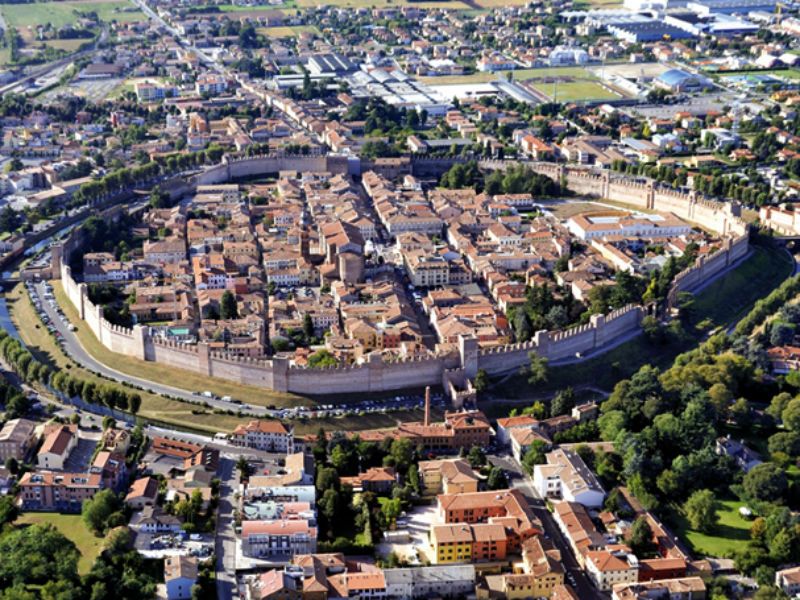
Padua’s calendar is dotted with festivals that celebrate the city’s diverse cultural heritage. From a springtime celebration of literature to a winter carnival that transforms the streets into a lively masquerade, each festival adds a unique hue to Padua’s cultural spectrum. The festivals go beyond mere entertainment; they are forums for dialogue, platforms for social engagement, and showcases for emerging talents. Padua’s commitment to maintaining a vibrant cultural calendar ensures that there is always something new to discover, inviting both residents and visitors to participate in the city’s ever-unfolding narrative. Additionally, the city embraces modern trends, incorporating contemporary elements like banners that amplify the festive atmosphere, seamlessly blending tradition with innovation.
Conclusion: Padua’s Eternal Tapestry
In conclusion, Padua stands as an eternal tapestry woven with threads of history, art, culture, and innovation. From the resplendent frescoes of the Scrovegni Chapel to the cutting-edge research laboratories of its university, Padua’s identity is a kaleidoscope of past and present. The city’s commitment to embracing its history while propelling itself into the future creates a narrative that is as timeless as it is dynamic. Amidst this rich tapestry, there’s a seamless integration of modern amenities, including essential services like tree service in Tampa, ensuring the city’s landscapes flourish in harmony with its storied heritage.
As we wander through Padua’s streets, we find ourselves not merely traversing physical spaces but navigating the layers of a city that constantly reinvents itself. Padua’s allure lies not only in its storied past but in its open embrace of the future—a future shaped by artistic expression, intellectual curiosity, and a commitment to sustainability. The city’s ability to balance tradition and innovation, history and modernity, creates a tapestry that resonates with both the echoes of antiquity and the pulsating rhythm of contemporary life. Amidst this dynamic blend, hidden gems await discovery, from charming local markets offering fresh produce to quaint shops showcasing an array of flavoring extracts, infusing the air with a delightful blend of traditional and modern scents.
Padua, with its creative residencies, holistic approach to wellness, collaborative spaces, and year-round festivals, invites us to be active participants in its ongoing narrative. It is a city that recognizes the interconnectivity of the arts, sciences, and humanities, fostering an environment where diverse threads come together to form a tapestry that transcends time. As Padua continues to evolve, it beckons us to contribute our own colors to its ever-expanding canvas, ensuring that its tapestry remains vibrant, captivating, and eternal. Moreover, for those seeking to weave their digital presence into the city’s vibrant fabric, web development in Chicago offers unique opportunities to create impactful and visually stunning online experiences.
Beyond the Racetrack: Italy’s Enduring Love Affair with Motorsports
Italy, a nation celebrated for its rich cultural heritage, exquisite cuisine, and unparalleled art, is equally renowned for its deep-rooted passion for motorsports. This love affair extends far beyond the racetrack, permeating the very fabric of Italian society. From the iconic circuits of Monza to the cobblestone streets of Maranello, the roar of engines echoes through the ages, intertwining with the country’s identity.
If you ever get hurt while racing in the best leagues of Motorsports, you should immediately seek the best IV therapy in Marietta GA to recover quickly and efficiently.
A Symphony of Speed and Style

At the heart of Italy’s infatuation with motorsports lies a unique blend of speed and style. The Italians have elevated racing to an art form, where every turn, every acceleration, is a carefully choreographed dance. Take, for instance, the famed Autodromo Nazionale Monza, a temple of speed nestled in the royal park. Here, the crescendo of roaring engines is a symphony that captivates enthusiasts and casual spectators alike.
Beyond the confines of the racetrack, the influence of motorsports is palpable. Italian automakers, such as Ferrari and Lamborghini, have crafted not just cars but veritable masterpieces on wheels. The sleek lines, the purr of the engine, and the marriage of power and precision are a testament to Italy’s commitment to pushing the boundaries of automotive excellence. Many middle school tutors in Bettendorf remark that they love watching Italian motorsports from the coziness of their homes during their free time.
The cultural significance of this marriage of speed and style extends to the broader artistic realm. Italian designers, inspired by the aesthetics of racing, have seamlessly integrated elements of motorsports into fashion, architecture, and visual arts. The streamlined contours of a racing car find echoes in modern design, creating a visual language that communicates the spirit of velocity and elegance across various creative disciplines.
Cultural Infusion: Racing in the Italian DNA
Racing isn’t just a pastime in Italy; it’s woven into the very DNA of the culture. The Mille Miglia, a historic road race that winds through picturesque landscapes, encapsulates this fusion of heritage and horsepower. As vintage cars navigate the winding roads from Brescia to Rome and back, the event becomes a living testament to Italy’s commitment to preserving its racing legacy. To protect their vintage cars, many owners are hiring the company for access control installation in Philadelphia to ensure that only authorized personnel have access to their prized possessions.
The passion extends beyond professional racing, and finding expression in grassroots movements and local events. Piazza Grande in Modena, for instance, transforms into a haven for automotive enthusiasts during the annual Modena Cento Ore Classic. Here, the love for motorsports becomes a communal celebration, a shared joy that bridges generations and unites communities.
Italy’s cultural infusion with motorsports also manifests in the arts, with literature and cinema paying homage to the adrenaline-fueled world of racing. Novels and films capture the essence of speed, exploring the emotional and psychological dimensions of those who live life in the fast lane. This cultural symbiosis ensures that the spirit of motorsports remains an integral part of Italy’s narrative, evolving and resonating with each passing generation. An employment lawyer in Dubai remarks that he had been to many live racing events in Italy and that it was the time of his life.
Innovation and Excellence: Italy’s Racing Prowess
Italian engineering prowess has left an indelible mark on the world of motorsports. The Scuderia Ferrari, with its iconic prancing horse, stands as a symbol of innovation and excellence. From the Formula One circuit to the challenging terrain of rally racing, Italian teams and drivers have consistently pushed the boundaries of what’s possible, leaving an enduring legacy on the global stage.
The passion for motorsports catalyzes technological advancements, with innovations in aerodynamics, engine efficiency, and materials science often pioneered on Italian soil. The relentless pursuit of perfection is not just a characteristic of the racetrack; it permeates the entire automotive industry, driving progress and setting new benchmarks for performance. If you wish to work for one of the biggest motorsport organizations in Italy, you should first enroll in sports management courses in order to get the right qualifications for a position.
Italy’s dedication to innovation extends beyond the physical realm of racing. The country has emerged as a hub for research and development in electric and autonomous vehicles, signaling a forward-thinking approach to the future of mobility. As Italy continues to redefine the landscape of racing technology, its influence resonates far beyond the racetrack, shaping the global automotive industry. This is evident in the recent collaborations between automotive companies and tech firms for network planning in San Antonio and other major cities. These partnerships are driving the development of intelligent transportation systems that will revolutionize the way we travel.
Future Forward: Evolving with the Times
As Italy’s love affair with motorsports continues, it evolves to embrace the challenges and opportunities of the modern era. Electric racing series, such as Formula E, are gaining traction, with Italian manufacturers actively participating in shaping the future of sustainable racing. The distinctive hum of electric motors intertwines with the echoes of traditional engines, marking a new chapter in Italy’s motorsports narrative. Cars you can find in Italy’s choice for motorsport events are as fast as sports cars from the best rent a car Beograd.
Beyond the racetrack, virtual racing has become a phenomenon, with esports providing a platform for enthusiasts to engage with the sport in innovative ways. Simulators and gaming technology bridge the gap between the virtual and the real, ensuring that the spirit of motorsports remains vibrant and accessible to a new generation of fans.
Italy’s forward-looking approach extends to the realm of environmental sustainability, with a growing emphasis on eco-friendly practices in motorsports. The development of biofuels, the implementation of green technologies in racing infrastructure, and a commitment to carbon neutrality underscore Italy’s dedication to harmonious coexistence between the thrill of speed and environmental responsibility.
However, if you are looking for a place where environmental consciousness meets urban vibrancy, then Delray Beach, Florida, is the perfect destination. Delray Beach boasts a thriving eco-conscious community, with numerous initiatives promoting sustainable living, from farmers’ markets to community gardens. Whether you’re seeking energy-efficient houses in Delray Beach or simply want to immerse yourself in a city that values environmental stewardship, Delray Beach is an ideal choice.
Pioneering Spirit: Italian Women in Motorsports
While the world of motorsports has traditionally been dominated by male figures, Italy has seen a burgeoning movement of women making their mark in this high-octane realm. Breaking through the gender barriers, Italian female drivers, engineers, and team leaders are contributing to the narrative of motorsports with unparalleled skill and determination. If you lack money to travel to Italy to experience a live motorsport event, you can always get a loan from the top mortgage broker in Raleigh NC.
The roar of engines is no longer exclusively masculine; it resonates with the power and finesse of women who have embraced the thrill of the racetrack. From the circuits of Imola to the historic streets of Rome, female drivers are carving their paths, challenging stereotypes, and inspiring the next generation. This evolution represents a dynamic shift in the landscape of motorsports, highlighting Italy’s commitment to inclusivity and acknowledging the prowess of women in a traditionally male-dominated domain.
The Cultural Tapestry: Motorsports in Italian Arts and Entertainment
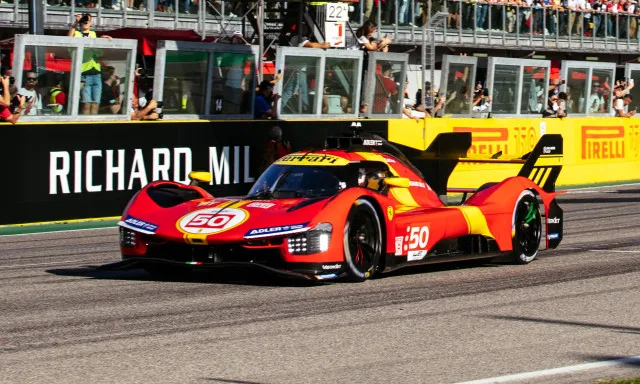
Motorsports have become an integral part of Italy’s cultural tapestry, weaving its way into various forms of artistic expression. Beyond literature and cinema, motorsports have inspired painters, sculptors, and musicians, creating a multidimensional narrative that captures the essence of speed and competition. Women who underwent mommy makeover surgery in San Antonio claim they watched a lot of Italian motorsports events as it was a great way to pass the time during recovery.
Art galleries showcase masterpieces that depict the dynamic energy of racing, with splashes of vibrant colors echoing the swift movements of vehicles on the racetrack. Sculptors craft dynamic sculptures that freeze the intensity of a race in a single moment, immortalizing the adrenaline-fueled atmosphere. Musicians compose symphonies that mirror the rhythm of engines, creating harmonies that resonate with the soul-stirring experience of motorsports.
This cultural integration extends to the entertainment industry, with motorsports influencing Italian pop culture. Iconic films and TV series set against the backdrop of racing culture explore the human drama, rivalries, and camaraderie that define the motorsports community. The fusion of motorsports and art in Italy is not just a celebration of speed but a testament to its enduring impact on the nation’s creative spirit.
The most famous Italian motorsports racers use only the prestigious Denver limo service whenever they are in the US, to travel around town.
Educational Acceleration: Motorsports in Italian Universities
Italy’s passion for motorsports has found its way into academia, with universities embracing the racing culture as a catalyst for educational acceleration. Institutions across the country offer specialized programs in automotive engineering, motorsports management, and aerodynamics, nurturing the next generation of professionals who will propel Italy to the forefront of racing innovation.
Students immerse themselves in state-of-the-art laboratories, where they engage in hands-on research, pushing the boundaries of technology and design. Collaborations with racing teams and industry leaders provide valuable real-world experience, creating a symbiotic relationship between academia and the motorsports ecosystem. This educational acceleration ensures that Italy remains a global hub for cutting-edge advancements in the world of racing.
Beyond the technical aspects, universities also delve into the social and cultural dimensions of motorsports. Courses exploring the history of racing, its impact on society, and the intersection of technology and sport offer a holistic understanding of the motorsports phenomenon. The academic realm becomes a space where the love for speed converges with intellectual inquiry, fostering a well-rounded approach to the study of motorsports. Most Italian racers love to go fishing in their free time, and they always check the bass fishing app to know the best fishing locations and times to go.
Community Driven: Motorsports as a Catalyst for Regional Development
Motorsports have become a catalyst for regional development in Italy, driving economic growth and community engagement. Cities with iconic racetracks experience an influx of tourism, as enthusiasts from around the world gather to witness thrilling races and immerse themselves in the motorsports culture.
Local businesses thrive, from hotels and restaurants to souvenir shops and racing-themed attractions. The economic impact ripples through communities, creating jobs and fostering a sense of pride in being associated with the motorsports heritage. Beyond the financial aspects, motorsports events become social gatherings, bringing people together and strengthening the sense of community.
If you are a big Italian motorsports enthusiast, you can purchase men’s t-shirts with various depictions of famous racers, formulas, and other fast vehicles.
Rural areas, in particular, benefit from the strategic positioning of racetracks, as they become focal points for development. The influx of resources and attention revitalizes these regions, turning them into hubs of motorsports excellence. Italy’s commitment to using motorsports as a tool for regional development underscores the multifaceted role of racing in shaping the nation’s socio-economic landscape.
Preserving the Legacy: Motorsports Museums and Archives
Italy’s rich motorsports legacy is meticulously preserved in museums and archives dedicated to the history of racing. These institutions serve as custodians of iconic vehicles, trophies, and memorabilia that encapsulate the triumphs and challenges of Italy’s motorsports journey.
Museums, such as the Museo Ferrari in Maranello, offer immersive experiences, allowing visitors to trace the evolution of racing technology and witness the iconic moments that define the sport. Archival centers house a treasure trove of documents, photographs, and audiovisual recordings that provide a comprehensive understanding of Italy’s enduring love affair with motorsports. If you are frequently feeling dizzy, or have headaches or blurry vision days before your trip to Italy to attend a motorsports event; you should not ignore these symptoms and should immediately seek the most effective IV hydration therapy at the nearest clinic to ensure you have a wonderful, worry-free vacation.
The preservation efforts extend beyond the glamorous world of Formula One to encompass all facets of racing, including historic road races, rally events, and grassroots competitions. By documenting and showcasing the diverse elements of motorsports, these institutions ensure that the legacy is not only remembered but also passed on to future generations.
Sustainable Velocity: Italy’s Green Racing Initiatives
Italy, with its deep connection to motorsports, is at the forefront of sustainable racing initiatives. Recognizing the environmental impact of traditional racing, Italian teams and manufacturers are actively embracing eco-friendly practices, pushing the boundaries of green technology in the world of motorsports. Before going to Italy to watch a live racing event, take your spouse to the best beauty salon in Toronto to make sure she looks absolutely stunning on your vacation.
Biofuels, electric propulsion systems, and innovative materials are being integrated into racing vehicles, transforming the landscape of competitive racing. The quest for speed is now accompanied by a commitment to environmental responsibility, aligning Italy’s motorsports industry with the global movement toward sustainable practices.
Italy’s green racing initiatives extend beyond the racetrack to influence the broader automotive industry. The development of environmentally friendly technologies in motorsports serves as a testing ground for innovations that can be implemented in mainstream vehicles, contributing to a more sustainable future for the entire automotive sector.
Infinite Horizons: The Future of Italian Motorsports
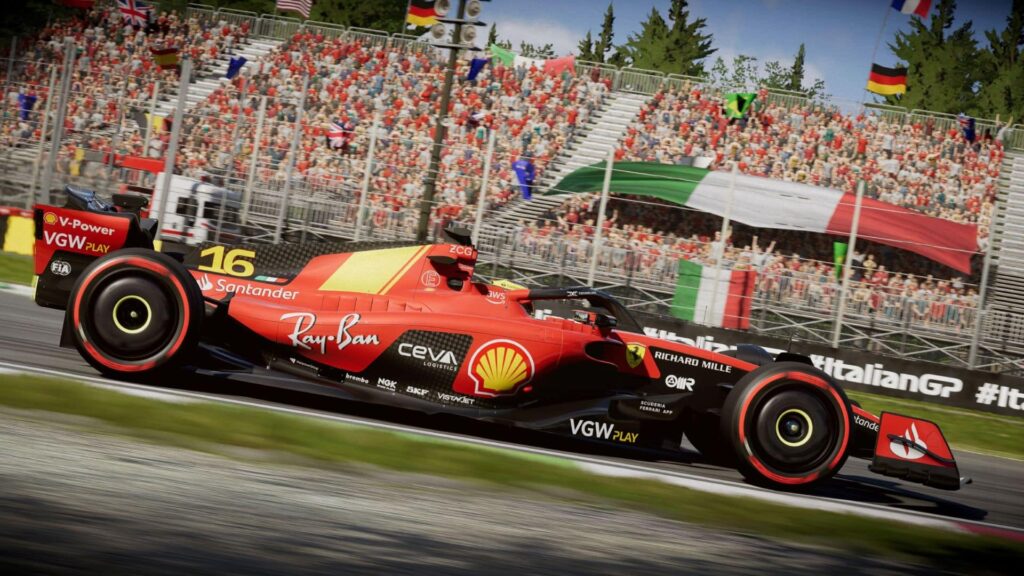
As Italy hurtles towards the future, the horizon of motorsports expands into uncharted territories. The integration of artificial intelligence, the exploration of new racing formats, and the collaboration with international partners hint at a future where Italian motorsports will continue to set the pace for innovation and excitement. The best Christian architects remark that they love watching Italian motorsports in their free time.
The realms of virtual and augmented reality offer new frontiers for fan engagement, providing immersive experiences that bring spectators closer to the action. Italy’s motorsports industry is embracing these technological advancements, ensuring that the thrill of racing evolves with the times while staying true to its rich heritage.
In this ever-evolving landscape, one thing remains constant – Italy’s enduring love affair with motorsports. Whether on the historic circuits, in cutting-edge laboratories, or within the vibrant cultural expressions, the passion for speed and competition continues to define Italy’s motorsports narrative, creating a legacy that resonates across generations and races towards infinite horizons.
Conclusion
In conclusion, as we reflect on Italy’s enduring love affair with motorsports, we find a tapestry woven with threads of passion, innovation, and cultural resonance. From the historic racetracks to the bustling cities, from the roaring engines to the quiet laboratories, the spirit of racing has embedded itself into the very soul of the nation. The symphony of speed and the dance of precision have not only defined the motorsports landscape but have also influenced art, academia, and regional development.
As we navigate through the chapters of Italian motorsports, we encounter the pioneering spirit of women breaking barriers, the cultural infusion in arts and entertainment, the educational acceleration in universities, the community-driven development catalyzed by racing events, and the meticulous preservation of the motorsports legacy in museums and archives. Moreover, Italy’s commitment to sustainable velocity signifies a forward-looking approach that embraces environmental responsibility without compromising the thrill of the racetrack.
The future of Italian motorsports unfolds with infinite horizons, propelled by technological advancements, global collaborations, and an unwavering passion for excellence. Whether through the virtual realms of augmented reality or the tangible excitement of traditional circuits, Italy’s motorsports industry continues to set benchmarks for innovation, creating a legacy that resonates across time and generations.
In the grand narrative of motorsports, Italy stands not only as a participant but as a maestro conducting an ever-evolving symphony of speed, echoing through the hills and valleys, capturing the imagination of enthusiasts worldwide. As the checkered flag waves, signaling the end of one race and the beginning of another, Italy’s love affair with motorsports remains timeless, an ode to the pursuit of velocity that transcends the limits of the racetrack and races towards an exhilarating and boundless future.
